 Royal Navy (1928-31)
Royal Navy (1928-31)A class: HMS Acasta, Achates, Active, Antelope, Anthony, Ardent, Arrow, Acheron
Canadian A class: HMCS Saguenay, Skeena
A class Leader: HMS Codrington
B-class: HMS Basilisk, Beagle, Blanche, Boadicea, Boreas, Brazen, Brilliant, Bulldog
B-class leader: HMS Keith
WW2 British Destroyers:
V class | W class | W mod class | Shakespeare class (1917) | Scott class (1818) | A/B class (1926) | C/D class (1931) | E/F class (1933) | G/H class (1935) | I class (1936) | Tribal class (1937) | J/K/N class (1938) | L/M class (1940) | Hunt class DE (1939) | O/P class (1942) | Q/R class (1942) | S/T/U/V/W class (1942) | Z/ca class (1943) | Ch/Co/Cr class (1944) | Battle class (1945) | Weapon class (1945)The first interwar British Royal Navy destroyers were the A and B classes, identical and built between 1927 and 1931 at seven yards, twenty total. They derived from the 1926 HMS Amazon and Ambuscade, which themsleves were a sort of synthesis between the large 1918 V-W classes and late flotilla leaders of the Shakespeare and Scott class. As always, Thornycroft was instrumental in this move and proposed to the admiralty the experimental HMS Amazon in 1926 when completed. She was a 1300 tonnes model and compared to the Yarrow built HMS Ambuscade, evaluated against Denny, Hawthorne Leslie, and White designs. Once the design was solidified, sixteen were ordered in 1928, eight A class and eight B class, to be lead each by a flotilla leader, HMS Saguenay and Skeena being reserved for the RCN. They notably innovated by their new Mark IX main guns and in 1940 they were rearmed as escort destroyers. They were the first of a long lineage of 77 interwar destroyers of a similar design until the Tribal class. The A and B class paid a heavy price to wartime operations with half lost in action. #ww2 #destroyers #royalnavy #hms ambuscade #hmsamazon
Development of British Interwar destroyers
In 1918, the Royal Navy had an imposing destroyer fleet built mostly in wartime and likely to stay in service for at least a good decade. The most valuable of these had been a serie of flotilla leaders, ending with the remarkable Thonycroft’s design of the Shakespeare class (1917) which really were a landmark in destroyer history, with a combination of speed and armament that was unmatched at the time and had a durable and widepread influence on destroyer design worldwide. The admiralty followed-up closely with the “Scott” serie, and both saw action in WW2. However these were flotilla leaders, an in concept, too costly to be of use as standard in large series.
The last and best “standards” arguably available immediately postwar were the “V-W” class destroyers. The twenty-six V class launched mostly in 1917 entered service in WW1 and were partly based on the Thornycroft design, as well as answering a request by the C in C to built a new larger class of destroyer capable of answering suspected large German destroyers in construction by 1916. They were essentally a repeat of the “V” class flotilla leaders capable of 34 knots, with a similar appareance and characteristics, and between 1100 tons standard and 1490 tons FL.
Compared to the “puny” R and S classes (also built at the time, 900-1000 tonnes) they were seen having a greater value. Twenty eight “W” class followed the “V” with december 1916 orders as repeats with triple torpedo tubes banks, and finally the “modified W” class laid down in 1918, launched and complete after WWI for the most advanced. On the 50+ ordered only 15 were completed. This mass of relatively large destroyers (1325 tonnes standard, 1508 tonnes FL for the mod W) were not only kept in service all the way into the interwar and WW2 (unlike the S class), they formed the bedrock for future improvements.
Given the drastic Washington treaty reductions in 1922, Britain was now down to twelve battleships (5 Queen Elisabeth, 5 Revenge and 2 Nelson in construction) as well as three battlecruisers, and the light cruisers of the C, D and E class, as well as the Cavendish class heavy cruisers, just a fraction of its might in 1914. The number of destroyers to escort these was to be reduced accordingly, and so the Acorn, Acheron, Acasta, Laforey, M class, Repeat M, R class, Mod R class destroyers as well as early florilla leaders were all discarded and scrapped postwar, either in 1921 or 1928. The S class which were in effect, smaller escort destroyers, were also discarded in 1931-37 apart rare exceptions. To replace these early WWI generation vessels, the Admiralty looked at new designs in 1925.
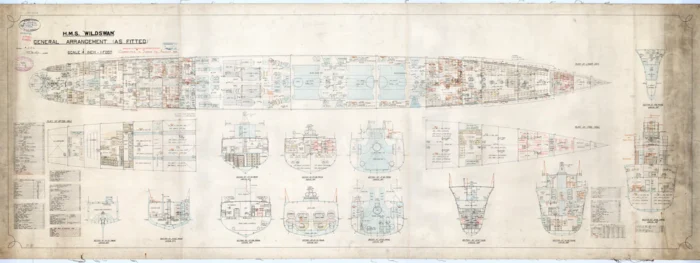
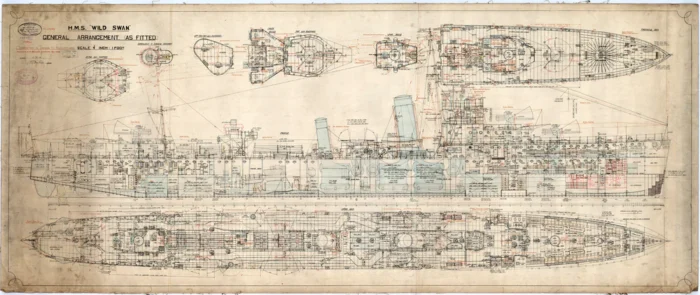
V-W plans, HMS Wild Swan at greenwhich Museum
If the large V and W classes had still all desirable qualities and kept as the bulk of the destroyer force, the well informed staff at Thornycroft knew that tenders for replacements will emerge soon or later for a new serie likely ordered in 1927. Thus in 1924, the company looked at how to improve the late was mod W class, and notably its “specials”, HMS Whishart and Witch launched in July and November 1919 and completed in 1920. This led to the design of an experimental destroyer, HMS Amazon, which was laid down in 1925 as a private venture, but based on official specifications that came out from the admiralty in 1923 actually.
 HMS Amazon (1926): Prototype for 77 “Interwar Standards”
HMS Amazon (1926): Prototype for 77 “Interwar Standards”
Thornycroft’s design
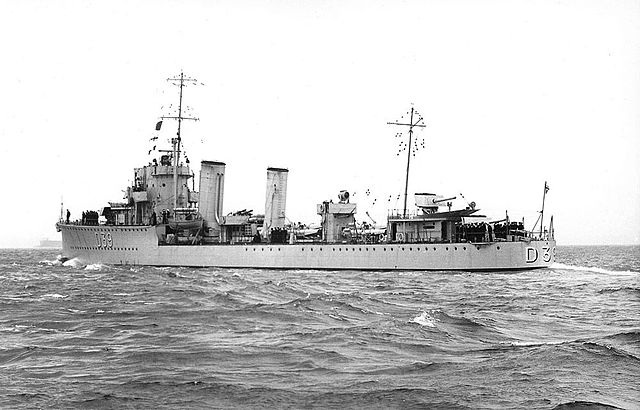
She was designed and built by Thornycroft in response to the November 1923 admiralty request for a new design, incorporating lessons of WWI and technological advances. Great rival yard Yarrow produced a similar and competitive design, HMS Ambuscade (see below). Thornycroft made at least four designs variant before building the final one. Two were 310 ft (94 m) long between perpendiculars and two 305 ft (93 m) long, with various engine configuration to deliver between 28,000 and 33,000 shp (21,000–25,000 kW). Two designs were offered to the Admiralty who required prototypes and later in 1924 was selected Thornycroft’s “A” design, using the maximum length allowed (310 ft between perpendiculars) by specifications was not retained, unlike “B” design which had a reduced length by 5 ft (1.5 m) and just a single boiler room forward like the previous W class HMS Wishart “special”.
Two designs machinery designed were prepared to fit in a third outline design. “B” design was further modified in November 1924 just after she had been officially ordered. She was laid down on 29 January 1925. The idea was to tweak the machinery in order to squeeze an extra 2 knots (2.3 mph; 3.7 km/h) extra speed. Thus the builder needed to added another section and increase her length. HMS Amazon was eventually launched after these modifications almost exatly a year after, on 27 January 1926. During her trials in 1926, turbines were altered again and she was completed with her traditional slab-sided funnels but were otherwise in design pretty much a repeat of its mod W “special”. Differences were internal and unlike home fleet service ships, she was designed from the start, for colonial use. She had nitably a higher freeboard and cruising turbines for better range and well as better ventilation, being “tropicalized” to some point.

Armament repeated the “mod W special” with the same four 4.7 in (120 mm) BL Mark I on CP Mk.VI** mountings fore and aft, superfiring, all derived from an Army field piece with separate bagged charges and so slow-firing and an elevation of 30°. They were guided by a 9 feett (2.7 m) base rangefinder as well as the new “Destroyer Director Control Tower” (DCT) created in between which did not existed before and increased fire accuracy at flank speed. First tested on HMS Amazon, it was later fitted on all subsequent Royal Navy destroyer designs, albeit not on the A/B but from the the C class onwards, up to the U class in 1942.
HMS Amazon reached 34.5 kn (39.7 mph; 63.9 km/h) on her initial trials, and this was not enough for the admiralty so she was further modified, with her acceptance trials on 3 January 1927 marked by a top speed of 37.5 kn (43.2 mph; 69.5 km/h), which was remarkable. The 1917-18 Flotilla leaders were capble of the same however. Hoiwever after further modifications, during a sea trials in calm seas at Skelmorlie Mile in March 1927, she managed to reach between 38.71 kn (44.55 mph; 71.69 km/h) at peak, and down to 37.34 kn (42.97 mph; 69.15 km/h) based on an average of 41,559 shp (30,991 kW) but this was done “on the light” with 300 long tons (305 t) missing, below deep displacement: Half oil reserve, no water, supplies, or ammunitions. When fully loaded in compabt condition she was down to 31 knots (36 mph; 57 km/h) and even lower in 1940. She was eventually completed on 5 May 1927. To put things in perspective she developed more power than the 1917 Scott destroyer leader design which was no small feat.
After all the effort put by Thornycroft in the design, the admiralty was fully satisfied and “licenced” the design as a basis of the next 77 destroyers, the “interwar standard” of which the A-B seen here were the first. That is until the Tribal class of 1936. HMS Amazon was further modified for her service in the Second World War as a convoy escort: “A” and “Y” main guns and aft TT bank removed, 12-pounder 3 in (76 mm) Mk.V AA gun in place of the latter, and Hedgehog projector on the forecastle replacing “A” mount. The mast was reinforved to receive a Type 286P radar. The now less useful rangefinder and director were removed and replaced by a centimetric Type 271 radar to detect surfaced submarines. The former AA pom-poms were replaced by 20 mm (0.79 in) Oerlikon with two more on the bridge wings. In 1943, the 12-pdr AA gun and remaining TT bank were removed to improved stability, as two DC racks with 10 depth charge pattern were installed. Also the Type 291 radar replaced the obsolete Type 286P.
⚙ specifications HMS Amazon 1926 |
|
| Displacement | 1,352 tons standard, 1,812(1980t 1943) tons full load |
| Dimensions | 311 ft 9 in x 31 ft 6 in x 9 ft 6 in (95.02 x 9.60 x 2.90 m) |
| Propulsion | 2 shafts Brown-Curtiss single reduction turbines, 3×3D Yarrow boilers, 42,000 shp (31,000 kW) |
| Speed | 37 knots (43 mph, 69 km/h) |
| Range | 433 tons oil, 3400 nm (6300 km) at 15 knots |
| Armament 1926 | 4× BL 4.7 in/45 Mark I, 2×2 2-pdr pompom, 2×3 21-in TTs |
| Armament 1943 | 2× BL 4.7 in/45 Mark I, 4x 20mm/70 Oerlikon AA, Hedgehog ASWRL, 2 DCT, 4 DCR |
| Sensors (ww2) | Type 286P, 291 radars, DCT |
| Crew | 164 |
HMS Amazon in action
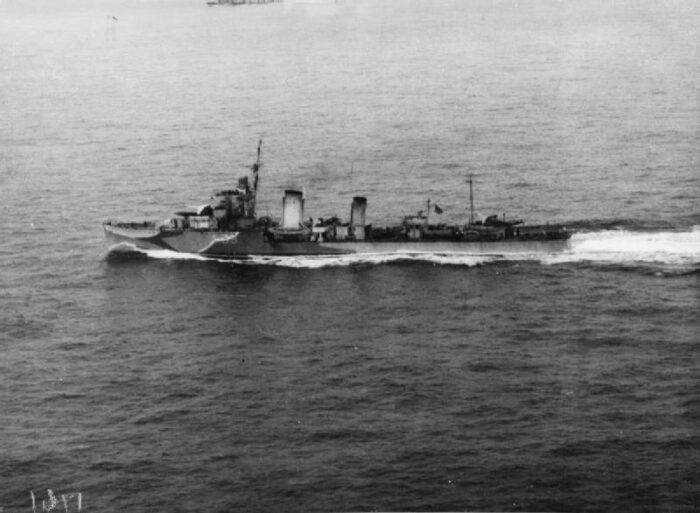
In 1939 to compensate for stability she had 50t of concrete ballast added, lost her aft TT banks fore a 3-in/45 QF Mk IV as well as 2 DCT, 1 DCR (20 DC) and a type 128 sonar to perform escort missions. HMS Amazon spent most of her time up to 1942 as escort for the North Atlantic and Russian convoys (Murmansk, arctic). In the Mediterranean was her most prominent action was to take part in Operation Pedestal. She was back in home waters in 1943 and remained in limited patrols in home waters and western approaches until 1944 when reduced as target. She was likely decommissioned at V-day in September 1945 (date unknown), and sold for scrapping after a period in the mothballs on 25 October 1948, by West of Scotland Shipbreaking at Troon, in 1949.
 HMS Ambuscade (1926), the rival from Yarrow
HMS Ambuscade (1926), the rival from Yarrow
Lighter but less Powerful
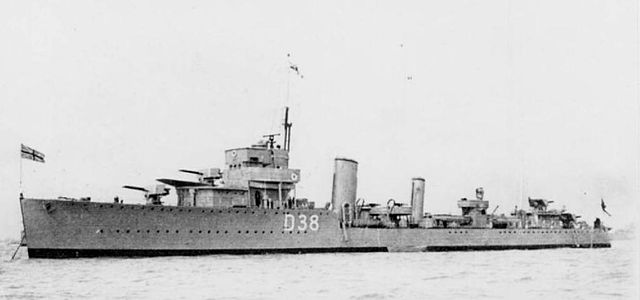
Rival Yard Yarrow also knew of the 1923 Admiralty specifications and prepared a design. The admiralty required a similar armament to the mod W-class destroyers but longer range of 5,000 nautical miles (9,300 km; 5,800 mi) at cruising speed and at least 34 knots required, while still 315 feet (96.01 m) long between perpendiculars.
Winning designs, Yarrow and Thornycroft, were followed by an order for a prototype each, placed in June 1924. Yarrow’s design (HMS Ambuscade) ended smaller and much lighter at 307 feet (93.57 m) long between PP over 1,585 long tons (1,610 t) full load compared to Thornycroft’s Amazon. The destroyer had the trademark Yarrow’s inward sloping stern, claimed as gaining 1 knot (1.9 km/h; 1.2 mph) compared to a V-shaped stern. She had three 4-drum Yarrow boilers, fitted with air pre-heating and capable of working at 290 pounds per square inch (2,000 kPa) and 200 °F (111 °C). They fed standard geared steam turbines from brown-Curtiss, driving two propeller shafts for a total of 35,500 shaft horsepower (26,500 kW) which was less than what was achieved by HMS Amazon.
As a result, and thanks to a lighter tonnage, she ended officially no faster, capable of 37 knots max on trials by 2 March 1927, in reality capped to 36.88 knots (68.30 km/h; 42.44 mph) as best, and 31 knots when fully loaded in combat conditions. Laid down at the Glasgow shipyard on 8 December 1924, she was launched on 14 January 1926 and commissioned on 9 April 1927.
Just like her sister she was appreciated for her better freeboard of 2.6 m against 1.9 meters, and a more spacious all-metal bridge as well as better habitability in general due to refined accomodations. However she was not truly “tropicalized” and showed in her early career this perfectly. Her machinery for example had an average ventilation and there was no extra cooling systems of air conditioning.

HMS Ambuscade in 1940, the blueprints.
Her main armament was identical to Amazon and during the war, as she became an escort, by April 1941 she had about the same modifications as Amazon, with a 3-inch (76 mm) AA gun replacing her aft TT bank, and later she had two Oerlikon 20 mm AA guns and lost her two A and Y 4.7 inch guns mounts, her rangefinder/director for a radar, gained a Hedgehog and heavier depth charge suite. In May 1943 she had one more refit and gained two Squid launchers. The same year she saw the removal of her two main gun on A and Y position as her 40mm/39 pompoms for 4x Oerlikon AA guns and a 24-178mm ASWRL Hedgehog as well as 70 DCs later 95 when she lost her 3-in gun and second TT bank. Her type 286 radar and type 128 sonar were replaced by the type 286PU radar and type 144 sonar.
Export success: The Douro class
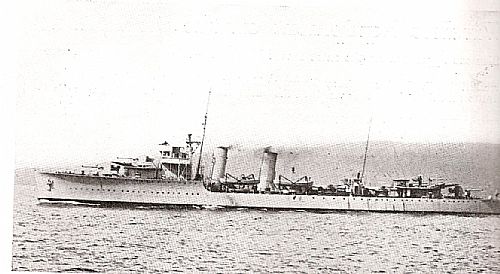
Ambuscade was agressively marketed on the global sphere just as Thornycroft’s and her design was retained by the Portuguese admirakty that wanted a replacement for its pre-WWI destroyers. This became the Douro-class, which served wit the Marinha Portuguesa from 1933 to 1967. Five being ordered in 1932. The first two (NRP Douro, Tejo) were laid down on 9 June 1932 but sold to the Colombian Navy before completion as the the Colombia–Peru War just erupted and the government offered a hefty price for them. They were renamed ARC Antioquia and Caldas (Antioquia class) and serrved for many years. Two further ships were ordered by the Portuguese Navy in replacement, built in Clydebank and remainder in Lisbon, but with Yarrow machinery.
HMS Ambuscade’s career
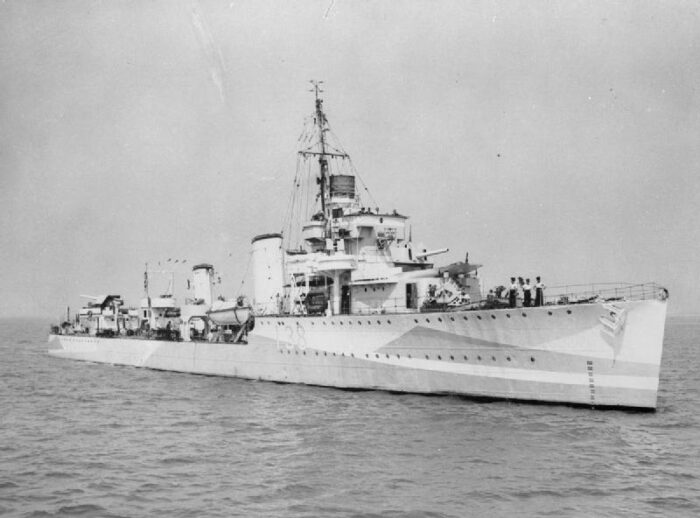
Ambuscade (pennant D38) joined the Atlantic Fleet during trials, with fixes at Chatham in September-November 1927. By April and August 1928, both rival Ambuscade and Amazon were were sent in a criser to South America and the West Indies to evaluate their machinery in tropical conditions. They indeed had problems for high temperatures in their engine rooms (untenable by the crew) but Ambuscade in addition revealed vibration issues and ended with a smaller range as Thornycroft’s ship. Following her return the admirakty decided to choose the latter’s design for the A/B and foillow-up series and she joined the 3rd Destroyer Flotilla, Mediterranean Fleet. In August 1929 she was damaged by an ineert practice torpedo, that banged her propellers and shaft starboard. In January 1930, she was assigned to 4th Destroyer Flotilla, Mediterranean Fleet. In August her turbines broke down ans she was repaired in Malta until March 1931. Back home she was placed in reserve at Sheerness.
In June 1932, she joined the Home Fleet and stayed in Irish waters. In December 1932, she became Tender to HMS Vernon torpedo school until February 1937. She had a compehensive refit at Portsmouth, with full turbines replacement, until May 1940. She saw the removal of her aft TT banks, installation in place of a 76mm/40 QF Mk I/II/V as well as 2 DCT, 1 DCR (20 DC) and a type 128 sonar.
Next, she was assigned to the 16th Destroyer Flotilla, Harwich, pennant I38. On 10 June she took part in the evacuation of 51st (Highland) Division from Saint-Valery-en-Caux during Operation Cycle, a follow-up of Dynamo. While embarking troops she was fired upon by German field artillery, and took HMS Boadicea under tow after she was badly damaged by Stukas. After anti-invasion patrols and convoy escort missioned in the summer of 1940, she was reassigned to the 12th Destroyer Flotilla at Greenock but her turbine problems sent her in repairs in September-November.
In December, she was based in Iceland for convoy escort but now she had condensers issues and was in repairs at Portsmouth from October 1941 to January 1942.
In 1941 she received a type 286 radar and in 1942 she had 65 t of solid ballast added for furyher additions, loosing to main guns for two 20mm/70 Oerlikon Mk II/IV and a Hedgehog ASWRL, 70 DCs and the type 271 radar and type 144 sonar.
In March 1942 she escorted Arctic convoy PQ 14 on to Iceland, and QP 9. However her captain kept signalling further mechanical problems so she was barred from convoy escort duties and ended in target duties. By late 1942 she was a trials ship for ASW weapons and sensors, with the type 286 radar installed and the ‘Parsnip’ ASW mortar as alternative to the Hedgehog. By May 1943 she tested the new Squid mortar coupled with its depth-finding Type 147 sonar plus 70 depht charges. Trials were successful, so she contributed to equip better escorts. In 1945 she was placed in reserve, “spent” in shock trials in 1946, then sold for BU in November that year, at Troon from March 1947. She was equipped also with the type 271 radar prior to her 286 radar and Type 144, then type 128 sonars.
⚙ specifications Yarrow 1925 design |
|
| Displacement | 1,173 tons standard, 1,585t (1820t wartime) full load |
| Dimensions | 322 x 31 ft x 8 ft 6 in (98.15 x 9.45 x 2.59 m) |
| Propulsion | 2 shafts, 2 Brown-Curtiss geared turbines, 3× 3D Yarrow boilers 35,500 shp (26,500 kW) |
| Speed | 37 knots (69 km/h; 43 mph) |
| Range | 428 tons oil, 3400 nm (6,130 km) at 15 knots |
| Armament | As Amazon |
| Sensors (ww2) | As Amazon |
| Crew | 138 |
Design of the A/B class
Also called in many publications the “Anthony class” based on the first ship launched, this was the first standard destroyer design a decade after the V-W of world war one. In all, 77 were buuit as follow-up C/D and D/E. They derived from 1926 prototypes describved above, HMS Amazon and Ambuscade from Thornycroft and Yarrow chosen as winners of the 1924 tender specifications for a new destroyer standard. They were ordered under the 1927–28 Naval Construction Programme.
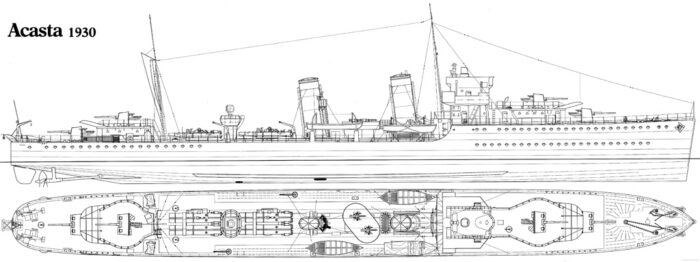
Two views plan of HMS Acasta, from the blueprints.
Initial late 1923 staff requirements proved unrealistic making for unaffordable ship so they were scaled back based on a perpendicular lenght to save money. Still, they needed to be faster, have a better range, being able of colonial operations, and be better armed, notably having a an improved gun and torpedo armament. Specs were revised again in 1926 when a new tender was offered to all shipyards, with a concession of 2 knots (3.7 km/h; 2.3 mph) in top speed compared to the 37 knots prototypes. The two series envisioned were named after the alphabet to mirror the “A” class back in 1910 (Acorn, etc.) with eight A class constituting a squadron attached to a flotilla leader (to be also built later, HMS Codrington in 1929) and eight B class, which as HMS Keith, a supplementary B class, as flotilla leader instead.
In the final specs, the admiralty chosed the Thonycrof design as a base and the class was heavier than Yarrow’s HMS Embuscade. The A class was identical to the B class except in some details of machinery, and size for the extra Canadian ones. They were also fitted for the A class with a Two-Speed Destroyer Sweep (TSDS) minesweeping gear for a ‘residual’ ASW ability. The B class by contrast had the latest Type 119 ASDIC installed, plus full complement of depth charges. The Admiralty developed at the time a policy to compare TSDS and more classic ASW capabilities between destroyer flotillas.
They were built at the following yards:
John Brown: Acasta, Achates, Basisisk, Beagle (all with Brown_Curtiss turbines instead of Parsons)
Thornycroft: Acheron, and the two Canadian ones, HMCS Saguenay and Skeena.
Hawthorne Leslie: Active, Antelope, Blanche, Boadicea
Scotts: Anthony, Ardent
Vickers-Armstrong: Arrow, Keith
Palmers: Boreas, Brazen
Swan Hunter: Brillant, Bulldog
Hull and general design

The A/B displaced 1,350–1,360 long tons (1,370–1,380 t) standard, 1,778–1,790 long tons (1,807–1,819 t) deeply loaded. This varied as the one-off HMS Keith by Vickers displaced 1400 tonnes standard and 1812 tonnes fully loaded. Conways also gives the figure of 1337 to 1360 tonnes standard, 1747 to 1815 tonnes fully loaded, and later in wartime up to 1930 tonnes and as much as 1990 tonnes.
As for dimensions, they were 323 feet (98.5 m) long, just like previous prototypes, for a beam of 32 feet 3 inches (9.8 m) and a draught of 12 feet 3 inches (3.7 m). The Canadian sub-class Saguenay and Skeena measured 320 feet overall (98 meters) for 32 feet 6 inches in beam. Between parallel they measured between 95.10 and 94.18 meters.
They had a metacentric height of 1.76 feet (0.54 m) when deeply load and a full complement of 138 officers and ratings, but up to 162 in wartime.
Powerplant
The A and B class destroyers had two Parsons geared steam turbines as standard for all builders based on the admiralty standard, albeit HMS Acasta, Basilisk, beagle had brown-Curtiss Turbines.
These droved two propeller shafts and were fed by three water-tube boilers equipped with superheaters. Five of the A class and all B class had the Admiralty three-drum boilers operating at 300 pounds per square inch (2,068 kPa; 21 kgf/cm2) and under a temprature of 600 °F (316 °C). HMS Ardent and Anthony from Scotts had instead Yarrow boilers, rated for 275 psi (1,896 kPa; 19 kgf/cm2) but same temperature.
HMS Acheron as well as the two Canadians were given experimentally Thornycroft boilers, using a working pressure of 500 psi (3,447 kPa; 35 kgf/cm2) and working at 750 °F (399 °C) to see if betwen weight and economy it was worthwile. Trials later showed that her fuel consumption indeed dropped from 0.8 lb (0.36 kg)/hp/hour to 0.6 lb (0.27 kg)/hp/hour. But in return all three were plagued by so many mechanical problems these were not adopted. The Admiralty preferred the conservative approach and keep the proven lower-temperature/pressure three-drum model for the whole interwar and until the late Battle class in 1942, unlike the US and nearly all other navies.
The turbines on all ships developed 34,000 shaft horsepower (25,000 kW) on average. Saguenay and Skeea were rated lower at 32,000 shp but treached 35 knots. The designed speed was indeed 35 knots (65 km/h; 40 mph) rather than 37 in order to alleviate reliability issue and reduce consumption. They all exceeded this figure during sea trials. 35.25 knots was common as average trials top speed but this dropped to 31-32 knots when fully loaded in service.
A and B destroyers carried between 388 and 390 long tons (394–396 t) of fuel oil for a range of 4,800 nautical miles (8,900 km; 5,500 mi) at 15 knots (28 km/h; 17 mph). Of course the Canadian ones, Saguenay and Skeena diverged and were capable of a bit more at 5,000 nautical miles.
Armament
It was standardized but saw a number of changes between ships. All A class and the Canadian ones had the mechanical minesweeping gear, but they carried still three racks for two depht charges each, 6 total, more on the B class. The latter indeed had one larger DC track (10 DCs) and two throwers or Y guns for 20 depht charges total, plus a Type 119 sonar.
As for the rest they were identical: Four main guns, AB, XY superfiring fore and aft, all 4.5 inches of 120 mm caliber 45 QF Mk IX, as well as two Bofors pompom 40/39 2pdr QF Mk II located on platforms between funnels, and two quadruple 21-inches instead of triple ones on the prototypes. This was probably the biggest change.
The only “black sheep” was HMS Keith, which in addition to a displacement of 1400/1821 tonnes, had four 4.7 inches/45 QF Mk IX, the same two 40mm/39 2pdr QF Mk II pompom, same TTs but two 2 DCT and a DCR (20 DC).
BL 4.7 inches/45 Mark IX

Produced from 1928, just as these classes were launched, the QF 4.7-inch Mk IX remained in service unntil 1970 and was used or exported to the RCN, RAN, Royal Hellenic Navy, Royal Netherlands Navy, Polish Navy, Royal Norwegian Navy, Turkish Navy, Dominican Navy, Argentine Navy, and Brazilian Navy with 742 Mk IX produced and 372 Mk XII of an improved design. They were installed on CP Mk.VI** mountings, max elevation 30°.
This was the ubiquitous ordnance in the Royal Navy and Commonwealth destroyers.
Specifications Mark IX
Mass: 2.963–2.984 long tons (3,011–3,032 kg)
Length: 220.62 in (5.60 m) Barrel 212.58 in (5.40 m) L/45
Shell: Separate loading cased charge, 50 pds (22.7 kg) SAP/HE
Breech: Semi-automatic horizontal sliding-block, Hydro-pneumatic recoil
Perfs: 15 rounds per minute at 2,650 ft/s (810 m/s) to 16,970 yards (15,520 m) at 40°
2-pdr/39 Pompom QF Mk II
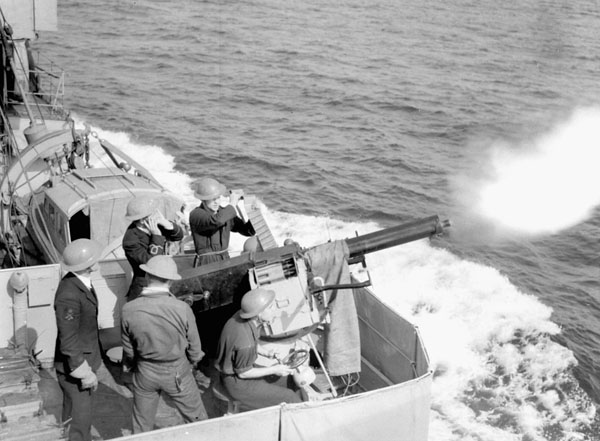
Specs:
Shell: 2 lb. (980 g) or 1.8 lb. (820 g) HV
Performances: 115 rpm fully automatic at 2,040 ft/s (622 m/s) or 2400 ft/s (732 m/s) for HV
Effective Range: 3,800 yards (3,475 m) or 5,000 yards (4,572 m) HV, Ceiling HV: 13,300 feet (3,960 m)
21-inches torpedo tubes
The greater change was going from triple to quadruple torpedo tubes banks. This really set apart the interwar British destroyers from all those prior and setup a new standard.
They were placed on a deck top plaform, reloadable thanks to cranes. The model used for the A and B class destroyers were relatively old. It’s unlikely oters were fitted as in WW2, these tubes were removed, first the aft bank, then the amidship one to make room for extra AA and ASW. The long range mode was so slow it made the torpedoes unusable against anything but old battleships and civilian vessels. The 40 knots mode however obliged to close the target to less than 5000 yards to be of use, a dangerous proposition unless in heavy weather and fog/night.
Specs 21 inches Mark V (1918)
Weight: 3,828 lbs. (1,736 kg)
Length: 23 ft 3 in (7.086 m)
Explosive Charge: Unknown, c600 Ibs. or 250 kgs TNT
Range and Speed settings: 5,000 yards (4,570 m)/40 knots or 13,500 yards (12,340 m)/25 knots
Power: Wet-heater
Hedgehog
Most received in 1942 instead of their”A” position main gun forward a 24 tubes 178mm Hedgehog ASWRL. There was suspended platform woth location for 24 launcher spigots firing a 65 lb (29 kg) 7 in (178 mm) rocket carrying 30 lb (14 kg) TNT or 35 lb (16 kg) Torpex to 200–259 m (656–850 ft) and explosing by contact. They created a circle like pattern on the suspected contact, leaving little change of survival especially to a just submerged U-Boat. The charges were too small to crack open a hull but at least they could create leaks and oil slicks that could be a position giveaway.
Depth Charges
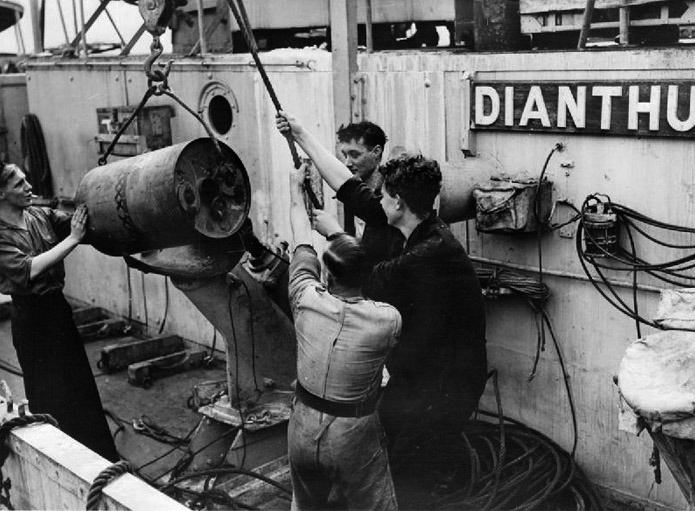
Mark VII depth charge thrower being reloaded.
The usual set comprised from two to four Mark II Depth Charges Throwers (DCT) aft on the poop deck, facing either side, and one to two Depth Charge Racks (DCR) at the stern. Each carried five charges but they were railing to the aft superstructure for a total storage of 40 more DCs. Reload was made by hand, using winches, always a dangerous task with a rolling deck washed by waves. These depht charges were of the standard British type, meaning it was the Mark VII: In entered service in 1939, weighted 420 lbs. (191 kg) and carried a 290 lbs. (132 kg) TNT with a sink Rate or Terminal Velocity of 9.9 fps (3.0 mps) with a max setting at 300 feet (91 m) later 500 feet (182 m).
It’s possible they were later upgraded to the the Mark X (1944) and the Mark X*. The X** was not introduced in service in 1945 despite its great depth (down to 1,500 feet (457 m)). Squid and Hedgehog made them obsolete. There are doubts also if the Mark VII Heavy studied from 1940 and proper to depth charge launchers were used aboard, outside experimentally. Weighting 420 lbs. (191 kg) with a 290 lbs. (130 kg) TNT charge, they had a sink rate/terminal velocity of 16.8 fps (5.1 mps) and a 300 feet (91 m) max setting, helped with a 150 lbs. (68 kg) cast-iron weight attached. The idea was to reach the U-Boat faster, and it was claimed it could split open a 0.875 inch (22 mm) hull at 20 feet (6.1 m), or force to surface at 12 m or more. The game changer was a minol charge (1942) for better results, with a 30% increase.
2-Speed Destroyer Sweep (TSDS) gear
The Two-Speed Destroyer Sweep (TSDS) minesweeping gear was only installed on the A class and was removed in WW2. Trailing behind the poop, these Mechanical sweeps were devices designed to cut the anchoring cables of moored mines. Only the B class had a classic ASW outfit. The A class received their ASW outfit prior to WW2.
Fire control: Destroyer Director Control Tower (DCT)

No data yet. Dependent on a 9 ft (2.7 m) base rangefinder which became standard. Removed in WW2 and replaced by the centimetric Type 271 for detecting surfaced submarines and Type 286 radar.
Sensors
Sonars
Type 119 ASDIC: 1930 hydrophone type.
Type 124: From 1937, improved Type 121, range 2500 yards, 1st with chemical range recorder.
Type 127: From 1940, mostly installed on British Flower class sloops, first with a bearing plotter.
Type 144: From 1943, range 2500 yards (2300 meters) to 3000 yards (2700 meters), integrated into the fire control and coupled with Hedgehog. 1st with bearing recorder, automatic scanning, turning 5 degrees after each ping, often coupled with the Type 147 “Sword” depth finding sonar with a beam steerable vertically. Also coupled with the Q attachment reducing the under hull blind spot. 60° deep vertical beam, trained with the main Type 144 transducer.
Radars
Type 286P: Installed on HMS Amazon, and all A/B class during the war. Metric target indication set based upon RAF ASV Mark II set with fixed antennae.
Type 286: Naval air search radar, first destroyer set, very crude, not rotating. Full data 286P: rotating antenna, better bearing accuracy of 3-5 degrees.
Type 271: Corvette small surface search radar using a standard microwave-frequency system with improved resolution to spot surfaced U-boat 3 miles (4.8 km) around, or a periscope at 900 yards (820 m). Full data
Type 285: Anti-aircraft gunnery radar available from late 1940, Frq 600 MHz, power 25 kw, range 18,000 yd (16,000 m), ceiling 15,000 ft (4,600 m) accuracy 150 yd (140 m).

HMS Achates in her western approach livery, 1942, old author’s profile. src

Author’s HD profile of the lead ship HMS Acasta as built.
⚙ specifications A/B class 1930 |
|
| Displacement | 1,350 tons standard, 1,778-90 tons full load |
| Dimensions | 323 ft x 32 ft 3 in x 12 ft 6 in (98 x 9.83 x 3.73 m) |
| Propulsion | 2 shafts, 2 geared turbines, 3× boilers 34,000 shp (25,000 kW) |
| Speed | 35 knots (65 km/h, 40 mph) |
| Range | 380 tons oil, 4800 nm (8,900 km) at 15 knots |
| Armament | 4× BL 4.7-in Mark I, 2× 2-pdr (40 mm/1.6 in) AA guns, 2×3 21-in TTs |
| Sensors | Hydrophones |
| Crew | 138 |
Interwar and Wartime Modifications
From mid-1940, The A class and Saguenay and A class had one TT ba,k removed as well as 2 DCR for a 3-in/45 QF and 2 DC Throwers installed and from 20 to 40 DCs, while the B class (only Beagle, Boadicea, Boreas, Brilliant, Bulldog received the same upgrade without the DCTs they already had. Later the A class received the type 128 sonar. In late 1940 until late 1941, Active, Antelope, Anthony, Arrow, Beagle, Boadicea, Boreas, Brilliant, Bulldog, Saguenay, Skeen lost their Y mount for two more 2 DC throwers, 70 DC total, Anthony, and Arrow swapping their 3-in for the TT bank back. In early 1942, two 20mm/70 Oerlikon Mk II/IV were added to all surviving A/B class, and until 1944 (except Skeena) theyw ere all modernized with the type 271, type 286 or type 291 radars.
HMS Achates was the first to loose her A mount and two Pompom for an Hedgehog ASWRL and two 20mm/70 Oerlikon Mk II/IV. She had up to 125 depht charges and the new type 144 sonar, used as modernization blueprint for the others. HMCS Skeena received the SW1C radar in 1942 and both followed Achates, but without the Hedgehog. It was installed in 1944.
Aroung 1943 for surviving ships, four 20 mm Oerlikon AA guns were the norm, as well as a hedgehog, two main guns, one TT bank, the type 144 sonar and up to 125 depht charges with two DCT and four throwers.
HMS Active, Anthony, Antelope in 1944 received two 57/40 6pdr Hotchkiss Mk I to deal with U-Boats in close quarters, and they were installed on others rapidly.
In 1945 the typical kit for a B class destroyer was two main guns 4.7 in/45 CP Mk XIV, two twin 20mm/70 Mk V AA and two single 20mm/70 Mk III, one quadruple TT bank, one Hedgehog ASWRL forward, four DC throwers and one large DC rack for 125 DCs as well as a combo of the type 271 and the type 291 radars, as well as the type 144 sonar.
The specials:
 Saguenay (River) class destroyers
Saguenay (River) class destroyers
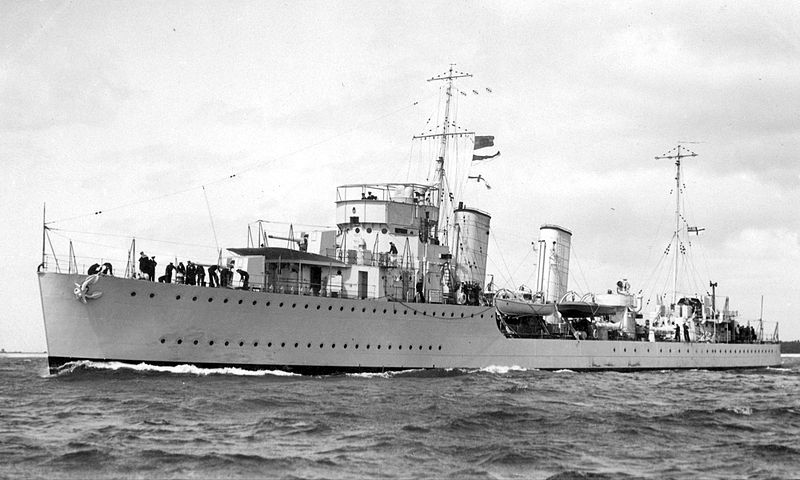
Design
These two Canadian destroyers, HMCS Saguenay and Skeena, buiult by Thornycroft (at Woolston, Hampshire) were designed along the A-class to tactically combine with them in wartime. The hull was different in that more flare was added to their bow to make them drier and the forward hull reinforced to support icing in winter. Their metacentric height was also increased forthe same reason, incorporate the build-up of ice and snow, so they were for this reason feet (0.9 m) shorter. These were well-though vessels, with better heating provided. They also had an extra 50 long tons of fuel, to cope with heavy weather, but 2,000 shp (1,500 kW) fewer horsepower. They also lacked superheaters for their boilers but on paper kept the same range and speed. They also had Thornycroft’s signature broad, slab-sided funnels. The other name they were known for was River class. But in reality these fourteen destroyers of the Royal Canadian Navy only shared the fact to be named after Canadian rivers, all purchased from the Royal Navy and tow built specifically by British yards as beyond the A class, there five C class, two D class, one E class, two F class, one G class and one H class. But HMCS Saguenay and HMCS Skeena were the first specifically built for the RCN.
⚙ specifications A/B class 1930 |
|
| Displacement | 1,337 tons standard, 1,805 tons full load |
| Dimensions | 323 ft x 32 ft 3 in x 12 ft 6 in (98 x 9.83 x 3.73 m) |
| Propulsion | 2 shafts, 2 geared turbines, 3× boilers 32,000 shp (23,862 kW) |
| Speed | 31 knots (57 km/h, 36 mph) |
| Range | 550 tons oil, 5000 nm (9,260 km) at 15 knots |
| Armament | 5× BL 4.7 in Mark I, 1× QF 3-in 20 cwt, 2×3 21 in TTs |
| Sensors (ww2) | See notes above |
| Crew | 181 (wartime) |
Career
 HMCS Saguenay
HMCS Saguenay
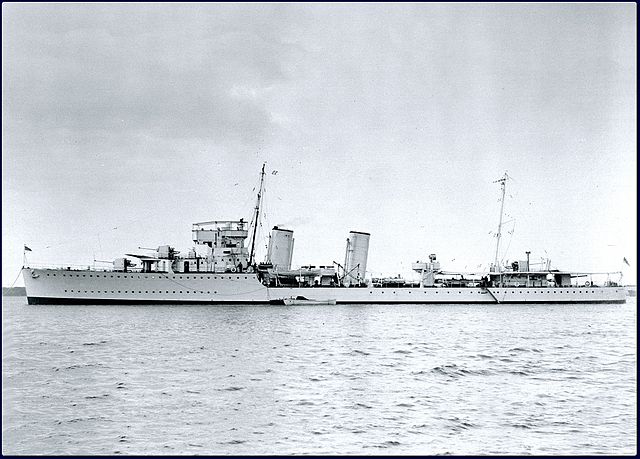
HMCS Saguenay arrived in Halifax on 3 July 1931 and trained in the interwar, withoutr notable event. In September 1939 she was assigned to convoy duties in the Halifax sector. By late September 1939, she was in the American and West Indies Squadron based on Kingston, Jamaica. On 23 October 1939 she almost captured the German tanker Emmy Friederich, but she scuttled herself in the Yucatán Channel. In December 1939 she joined the Halifax convoy escort force until 16 October 1940, then transferred to Greenock as North Atlantic escort. On 1 December 1940 while escorting the Convoy HG-47, she was torpedoed 300 miles (480 km) west of Ireland by the Italian submarine Argo. Her bow was completely shattered and crumbled but her bulkhead held firm and she managed to return to Barrow-in-Furness under her own power (21 dead) and repaired in Greenock until 22 May 1941. This was not all for the unlucky ship.
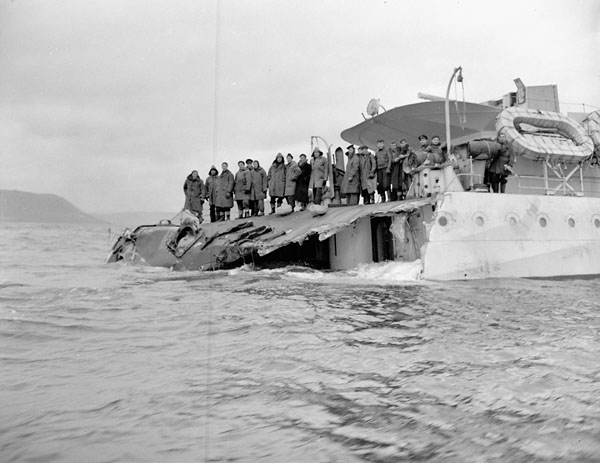
Damaged stern of the destroyer Saguenay. Saguenay was rammed by SS Azra south of Cape Race, and lost her stern when her depth charges exploded. St. John’s, Newfoundland.
Back at sea on 22 May 1941 she joined Escort Group C-3 with the convoys ON-93, HX-191, ONS-104, SC-90, ON-115, HX-202, ON-121, SC-98, ON-131, HX-210 and ON-141, until a collision on 15 November 1942 with the Panamanian freighter Azra off Cape Race off Newfoundland set off her depth charges and blew off her stern.
She had her stern plated over in New Brunswick but on 23 May 1943 was transferred to Halifax, and started service with the Western Ocean Escort Forc from Halifax and St. John. In October 1943 she was sent to Digby, Nova Scotia and became a tender for HMCS Cornwallis RCN training depot and to teaching seamanship and gunnery until 30 July 1945. She was discarded late 1945 and sold for BU in 1946.
 HMCS Skeena
HMCS Skeena
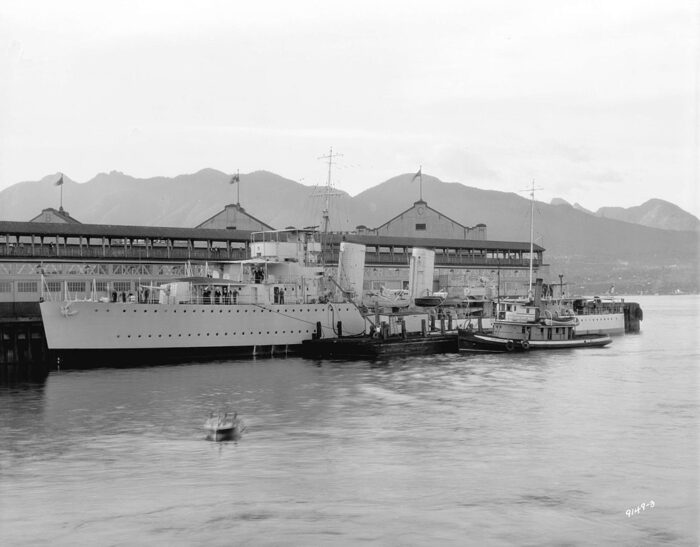
HMCS Skeena brought to CPR pier C in vancouver, 1934. Note the shape of her open bridge with framing for tarpauling above, and enclosed bridge with portholes below.
After completion she arrived in Halifax on 3 July 1931. Nothing is known about her interwar career, nor her actions until the 17 July 1940 when she rescued 65 survivors of the British merchant ship Manipur, sunk by U-57 off Cape Wrath. On 2 September, she rescued 19 from Thornlea (sunk by U-46). On 14 October 1940 assisted by the corvette HMS Periwinkle, rescued 220 from HMS Cheshire, badly damaged by U-137. On 23 November 1940 she rescued 6 survivors from the Norwegian Bruce (U-100= and 9 from Salonica (U-100). She served with the North Atlantic convoy Escort Group C-3 and escorted convoys ON 93, HX 191, ONS 104, SC 90, ON 115, HX 202, ON 121, SC 98, ON 131, HX 210, ON 141, SC 109, ONS 152. On 31 July 1942 assisted with HMCS Wetaskiwin she depth charged and co-claimed U-588. She had a major refit in January 1943. Her last convoy mission was ON 216 on 17-29 December 1943 after which she had a long overhaul. Her service afterwards is unknown, but Skeena she lost in a storm on 24-25 October 1944 while anchored off Reykjavík when she dragged her anchor, grounded in 50-foot (15 m) waves off Viðey Island. She lost 15 of her crew. She was sold for BU to Iceland in June 1945, raised and BU, propeller now a memorial near Viðey Island ferry terminal.
 A class flotilla leader: HMS Codrington
A class flotilla leader: HMS Codrington
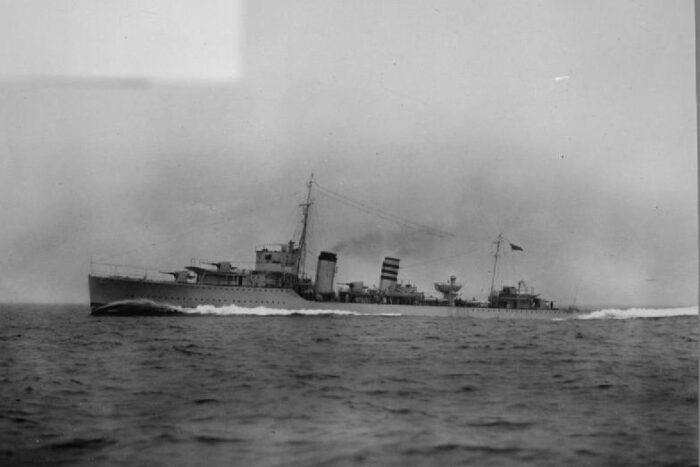
Design of HMS Codrington
Codrington was not in the strict sense an A class destroyer, she was modified and sufficiently different to justify a separate class. She is there for practicity. She was built indeed to an enlarged design in order to accommodate the staff of destroyer flotilla (Captain (D) which represented some 47 additional officers and ratings. She was longer and beamier than an A class, and built by Swan hunter. She displaced more and was 20 feet (6.1 m) longer overall, one 1 foot (0.3 m) wider as well than an A class destroyer.
She also gained an extra 5th 4.7-inch gun installed between the funnels, with her 2-pounders relocated abaft the rear funnel, and no TSDS unlike the A-class. Stability was a concern and so her oil tanks were increased by 40 long tons. She had Parsons geared turbines and three Admiralty 3-drum boilers, being rated at 39,000 shp (29,000 kW) and with the same range and speed as the A class but much faster at 37.7 knots (69.8 km/h; 43.4 mph) in sea trials. She however had a long turning circle making her less agile than the eight flotilla ships she led. Her ASW suite was ported to 25 depth charges and then 47 before her loss in July 1940 after the Norwegian Campaign. The latter showed she was vulnerable to Stuka attacks and saw the removal of TT banks and installation of a QF three-inch (76 mm) 20-cwt anti-aircraft gun.
⚙ specifications A class Leader 1930 |
|
| Displacement | 1,540 long tons standard |
| Dimensions | 343 ft x 33 ft 9 in x 19 ft 9 in (104.5 x 10.3 x 6 m) |
| Propulsion | 2 shafts geared steam turbines, 3× Admiralty 3-drum boilers 39,000 shp (29,000 kW) |
| Speed | 35 knots (65 km/h; 40 mph), 37 kts trials |
| Range | 5,000 nmi (9,300 km; 5,800 mi) at 15 knots (28 km/h; 17 mph) |
| Armament | 5× 4.7-in/45, 2× 2-pdr pompom AA, 2×4 21 in TTs, 2× DCT, 4x DCR (8) |
| Sensors (ww2) | Like A class |
| Crew | 185 |
Career of HMS Codrington
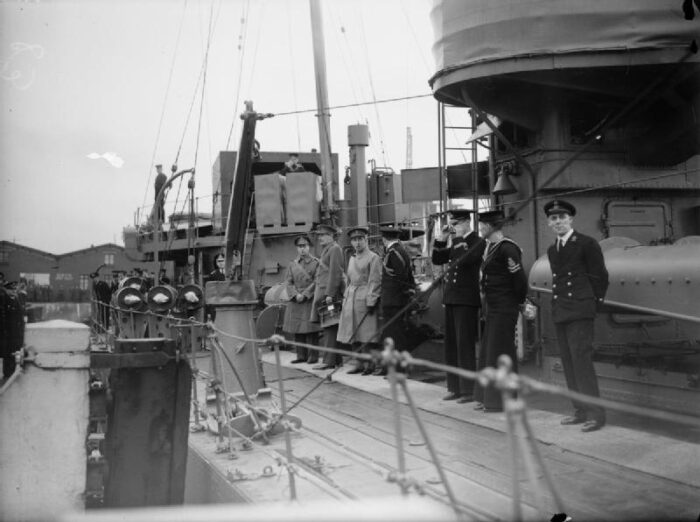
King George VI onboard HMS Codrington
By July 1930 Codridgton took the lead of the 3rd Destroyer Flotilla (A class) for the Mediterranean Fleet. In June 1931 she had fixes at Devonport to her faulty turbines and back in July. She had another refit in September–October 1932. On 12 June 1934 she collided woth Acasta (minor damage, no injuries).
On 17 July 1936 she patrolled off the coast during the Spanish Civil War. On 23 August she helped the British steamer Gibel Jerom (Bland Line), stopped by the Spanish Republican light cruiser Miguel de Cervantes off Cape Tres Forcas as she was en route for the Nationalist-held Melilla with petrol. The Republicans backed down and she escorted Gibel Jerom to Gibraltar. On 12 January 1937 she sailed with the depot ship HMS Woolwich to Valencia to rescue nationals when bombarded by a Nationalist warship. Back home by March 1937 she was replaced as leader by the brand new HMS Inglefield in June 1937. She was in reserve and joined the Royal Naval Engineering College at Keyham in Plymouth by October 1938. She had a new refit and was recommissioned in August 1939.
Assigned to the 19th Destroyer (Dover) Flotilla, Nore Command and until October 1939, she escorted convoys with the BEF to France. She patrolled the English Channel and North Sea until December and embarked King George VI on 4 December to Boulogne for his visit to the BEF, re-embarked on 10 December. On 4 January, she went on her VIP service thanks to her roomy accomodations with Winston Churchill at the time still First Lord of the Admiralty to France. In February she was reassigned flotilla leader of the 1st Destroyer Flotilla, Harwich after a refit in March.
On 6 March she resumed convoy escot/patrol in the North Sea, then transferred for “detached service” with the Home Fleet and joined the HMS Griffin, Jupiter, Electra, Escapade, Brazen, Bedouin, Punjabi, Eskimo and Kimberley as escorts of the battleships HMS Ramillies and Valiant, battlecruiser Repulse, light cruisers Sheffield, Penelope and French Émile Bertin to prevent a German attempt to breakout into the Atlantic unaware of the invasion of Norway. They were later attacked by German bombers. Codrington was detached to refuel at Sullom Voe on 10 April, back the following day. She sailed with Acasta and Ardent screening for Valiant escorting Convoy NP1 with troops to Norway. She remained at Harstad and later escorted Convoy FP2 to Harstad with troopships carrying the French 27e Demi-Brigade de Chasseurs Alpins, Mountain Infantry on 24-27 April. Next she acted as VIP transport again with the Earl of Cork and Orrery and French General Antoine Béthouart for a reconnaissance of the Narvik area, shelling German gun positions and railways.
With the German offensive to the west on 10 May, Codrington recalled to Dover and evacuated members of the Dutch royal family at IJmuiden to UK. With the French destroyer Jaguar, she covered an unsuccessful attempt to cut the underwater telephone cable between Amsterdam and UK on 22-24 May.
Next she took part in Operation Dynamo, evacuating troops from Dunkirk. On 28 May she sortied with Jaguar and Javelin, rescued 33 from the Belgian coaster SS Abukir, and later 866 men from Dunkirk to Dover, same on 29 May (766 troops,) and 30 May (799 troops) then 31 May (909 men), 1 June (746 troops, including Major-General Bernard Montgomery). On 2 June, 878 troops and on the 3th only 44 men, mostly officers.
She was back on the night of 9/10 June for another evacuation at Le Havre, postponed for the French to evacuated their own troops and later at St Valrey she evacuated the 51st Highland Division in the fog, 11/12 June. She remainder leader, 1st Destroyer Flotilla at Dover before a refit and being demagnetised, submarine tender Sandhurst, attacked on 27 July by Bf 109E-4/B fighter from 3. Staffel/Erprobungsgruppe 210, near missed by a bomb. This broke her back, riddled her with holes with three men wounded. She sank, and by 1941 her structures were erased, her hull refloated and scrapped from 13 June 1942. Her other half was not removed only by May 1947 and parts still layds at the bottom today.
 B class flotilla leader: HMS Keith
B class flotilla leader: HMS Keith
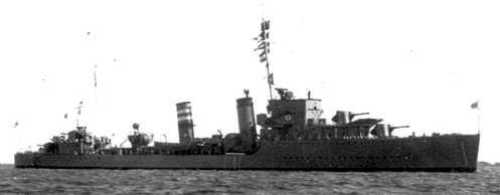
HMS Keith was a second leader for the B class, but shared the same hull as her sisters to save money. It was posposed to enlarge her aft deckhouse for Captain (D) and staff instead of her ‘Y’ gun but it was reinstated while under construction under the 1928 Naval Programme, laid down on 1 October 1929 at Vickers Armstrong, Barrow in Furness, launched on 10 July 1930. She was too small for her role, HMS Blanche being fitted as a divisional leader with the surplus. She ended 40 long tons (41 t) heavier than the others at standard load, 100 long tons (100 t) heavier (full load) at 1,400 long tons/1,821 long tons and only had room for 19 additional officers and ratings. In short, she was a mediocre leader and still cost £219,800 without guns and equipments.
Her career was as follows:
After her commission on 20 March 1931, she was assigned to the 4th Destroyer Flotilla as leader, with a quick refit at Chatham 4 September-18 October 1933, served in the Mediterranean Fleet until 1936. She collided with the Greek steamship Atonis G. Lemos in fog, English Channel on 24 August 1936. Her new refit was not completed until 13 February 1937, followed by reserve at Sheerness, fully recommissioned on 14 August 1937 to replace Faulknor at the 6th Destroyer Flotilla, due to repairs after collision. She was patrolling the Bay of Biscay during the Spanish Civil War and from Gibraltar. She was placed in reserve at Sheerness on 4 November, refitted at Chatham 9 May-16 June 1938 and joine dthe 4th Destroyer Flotilla, Home Fleet, then took on the crew of Electra and joined the 5th Destroyer Flotilla at Gibraltar, 17 January 1939. New refit at Chatham 11 May-15 July and reserve again on 31 July, recommissioned in August 1939, 17th Destroyer Flotilla, Home Fleet. On 3 September she worked for the Western Approaches Command from Milford Haven. On 10 September she escorted a BEF convoy to France. On 29 October she joined the 22nd Destroyer Flotilla at Harwich as leader but had her propellers repaired in December at Devonport until 10 January 1940. Next she joined the 19th Destroyer Flotilla in February and escorted Boadicea on 5 March, towing the crippled oil tanker John F. Meyer to Southampton.
On 10 May 1940 with HMS Boreas she escorted the light cruisers Arethusa and Galatea carrying a bullion from IJmuiden to UK for safe-keeping. On 12 May she was back at the Hook of Holland to evacuate Allied troops. Whitley ran aground on 19 May after Stuka heavy damage, and was scuttled by Keith. On 21 May, Keith evacuated 468 civilians from France. On the 23th, she wast at Boulogne-sur-Mer to evacuate British troops when attacked by German field artillery, being hit by a mortar bomb and MG fire at short range. The briudge was devatasted, captain and most officers killed or wounded. She back home for repairs and took on a new captain and staff.
She was back for Op. Dynamo on 30/31 May, taking 992 Allied troops from Dunkirk. At De Panne she became flagship, Rear-Admiral Frederic Wake-Walker but was soon attacked by aircraft. One near mised jammed her steering gear, and later a Stuka managed to plane a bomb down her aft funnel. She lost her No. 2 boiler room, killing everyone inside. The fire, with all pimps down, was incontrollable and she was anchored and abandoned, sinking at 09:45 with 3 officers and 33 ratings killed, 8 officers, 123 crewmen rescued. Her wreck was explored several times, notably 2016 and 2019, nearly gone by 2023.
Career of the A class
 HMS Acasta (H09)
HMS Acasta (H09)
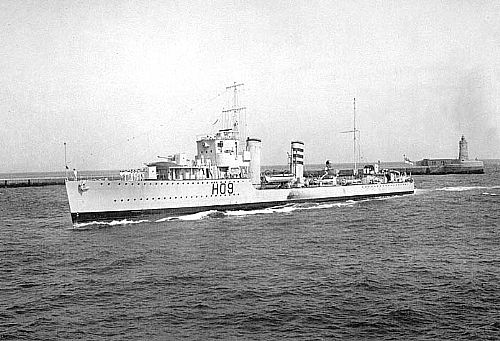
HMS Acasta was ordered on 6 March 1928 from John Brown under the 1929 Naval Programme, laid down at Clydebank shipyard on 13 August 1928, launched on 8 August 1929, completed on 11 February 1930, commissioned three days later, assigned to the 3rd Destroyer Flotilla, Mediterranean Fleet. She remained there until 1937 with refits in Devonport in 1932 and 1935 and at Gibraltar in 1933. She collided with her leader Codrington off Malta in an exercise on 12 June 1934, sent in repairs until 27 July. Until April 1937 she helped refugees and patrolled in Spanish waters. She had a long refit at Devonport from 1 May until 11 April 1938, with ASDIC installed. She was reassigned to the 7th DF, Irish waters before a last refit at Devonport between in November 1938 to17 January 1939. She later tested ASDIC equipment for the Argentinian light cruiser La Argentina in March.
In September 1939 she was in the 18th DF, Plymouth, escorted convoys in the Channel. She had a new refit at Devonport 20 December to 5 January 1940 and was reassigned to the Western Approaches, escorting 22 convoys until April 1940 and escorted the damaged HMS Ajax to Plymouth after the battle of river plate.
With the ongoing invasion of Norway on 9 April she joined the Home Fleet and on 13 Apri escorted Convoy NP1 to Narvik, but diverted to Harstad. On 9–15 May, she escorted back the badly damaged cruiser Penelope to the Clyde. On 31 May with Ardent, Acheron, Highlander and Diana she escorted HMS Ark Royal and Glorious for supporting Operation Alphabet on the Norwegian coast and remained with the carriers in early June.
She escorted Glorious back to Scapa on 8 June but en route, they were caught by Scharnhorst and Gneisenau at 15:46, lost in sight but respotted again at 16:00. Ardent was detached to recoignise their pursuers while Acasta remained with Glorious. Then the Germans opened fire at 16:27, ignoring the DDs, engaged with their secondary battery and concentrating with their main on Glorious. Acasta smoked and opened fire symbolically as she was outranged. She took a first hit, light damage. But the carrier was soon crippled and started to list, Acasta being detached to close on the “terrible sisters” and engage them as a diversion. She launched four torpedoes, one hitting Scharnhorst’s hull at 17:34. Ths created a 39-foot (12 m) hole, flooding and disabling her starboard engine room. But now both concventrated on her and she was blasted from prow to stern. Captain, C. E. Glasfurd ordered her crew to abandon ship but one gun crews remained and struck one of the Scharnhorst’s main guns with shrapnel damage. She sank stern first at 18:20. Most of her crew survived only to die from exposure before the Norwegian merchant ship SS Borgund rescued two men, three days later (one dield later), and 36 men from Glorious. In all the heroic destroyer was lost with eight officers and 153 ratings.
 HMS Achates (H12)
HMS Achates (H12)
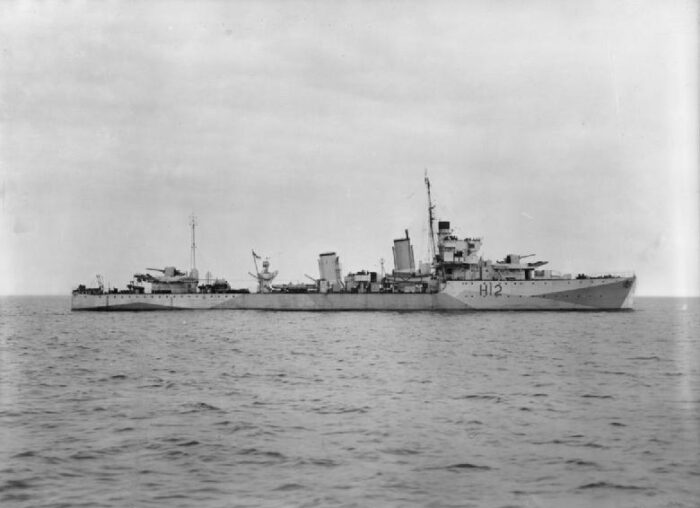
HMS Achates was ordered on 6 March 1928, laid down on 11 September 1928 at John Brown, launched on 4 October 1929, completed on 27 March 1930, joining the 3rd Destroyer Flotilla, Mediterranean Fleet like the rest of the A class, led by Codrington. In early 1931 she escorted HMS Eagle to Buenos Aires, for the Empire Trade Exhibition and stopped at Montevideo and Rio de Janeiro. In October she was sent after a rioting in Cyprus, then a British protectorate. She escorted the cruisers London and Shropshire on 22 October. On 4 April 1932 she collided with HMS Active off Saint-Tropez. She was refitted at Devonport in October 1932 and alternated between Gibraltar and Malta.
On 13 January 1937 she collected the Republican Spanish steamer Aragon seized by the German cruiser Admiral Graf Spee in retaliation after the action at Palos. Her crew was landed at to Málaga. She joined the 3rd Flotilla and was placed in reserve from March 1937 at Devonport. In October she replaced Woolston in the 1st Anti-Submarine Flotilla, Portland. In July 1938 she relieved Wolverine as emergency destroyer at Devonport. In May 1939 she worked woth the 6th Submarine Flotilla, Portland.
In September 1939 she was reassigned to the 18th Destroyer Flotilla, Portsmouth Command for escort duties in the Channel. In July 1940 she was reassigned to the 16th Destroyer Flotilla of Harwich, North Sea area. On 2 August 1940 this was the 12th. November 1940, 4th Escort Group. On the 2nd while escorting Convoy OB 237 she joined Antelope attacking U-31 wuth depth charges. She later surfaced and scuttled herself. In 1941 she joined the 3rd Destroyer Flotilla, Home Fleet.
She took part in the Battle of the Denmark Strait with the destroyers Electra, Antelope, Anthony, Echo, and Icarus, escorting Hood and Prince of Wales on the northern approaches after a breakout of Bismarck and Prinz Eugen in support for the shadowing cruisers Norfolk and Suffolk.
On 23 May evening in poor weather the destroyers had a hard time keeping pace and at 0203, 24 May, they were ordered to continue North, the capital ships turned south, to be sighted without escort at 0535. After the loss of Hood, Admiral Wake-Walker on Norfolk, ordered the destroyers to search for survivors. Electra after two hours but only recovered three survivors and continued searching for several hours searching before leaving.
On 23 July 1941 she accompanied the raid force on Kirkenes and Petsamo assembling off Iceland, when hitting a British mine, blowing off her bow, killing 63 crew, injuring 25. She was towed to Seyðisfjörður by Anthony, patched and sent under tow by Assurance on 7 August, battered by a storm and took refuge at Skaglefjord, Faroe Islands, for more patching. She arrved at the Tyne on 24 August 1941, repaired for eight months. On 23 May 1942 she escorted Arctic convoy PQ 16 until 30 May and later the westbound convoy QP 13 from Arkhangelsk on 26 June. By September 1942 she escorted PQ 18, and return from Arkhangelsk on 21 September. By November 1942, she took part in Operation Torch, with the assault convoy, and escort aircraft carriers off Oran, Algeria. On 8 November 1942 she detacted and attacked a Vichy French submarine, until seeing the rise of oil and air bubbles as debris. Two submarines were sunk by Achates and Westcott off Oran that day, wich were the 600 tonnes Argonaute and Actéon.
Next she took part in the Battle of the Barents Sea:, On 25 December 1942 she escorted Convoy JW 51B to Murmansk and on 31 December it was attacked by Admiral Hipper and Lützow accompanied by six large destroyers in a pincer. At 9:15 hr Achates, positioned herself to lay smoke screens and obscure the convoy, being damaged by a near-miss from Hipper. At 11:15 hr she was ordered to assist the badly damaged Onslow, was spotted and fired at by Hipper, badly hit, 40 killed including Lieutenant-Commander A. H. T. Johns, plus more flooding. Lieutenant Loftus Peyon-Jones took on as she continued to lay smoke but her list increased and at 13:00 hr, power was lost and signalled her statuts to the trawler Northern Gem which came to her assistance when she capsized at 13:30 hr. 81 were rescued, 113 went down with her. Peyton-Jones was later awarded the DSO and others in the crew received a Conspicuous Gallantry Medal, DSC and DSM with 16 men Mentioned in dispatches, 11 posthumously.
 HMS Active (H 41)
HMS Active (H 41)
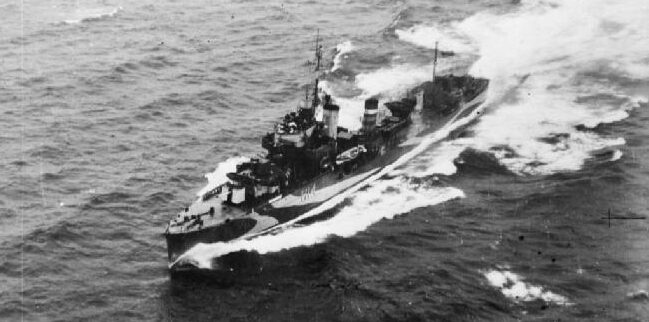
Active was ordered on 6 March 1928, laid down on 10 July 1928 at Hawthorn Leslie, launched on 9 July 1929, commissioned on 9 February 1930, the first of the A class completed (Anthony was the first launched). She was assiggned to the 3rd Destroyer Flotilla, Mediterranean Fleet remaining there apart refits until 1939. On 4 April 1932 she collided with Achates off Saint-Tropez. In 1936 she patrolled Palestine after thee Arab revolt. She patrolled the coast during the Spanish Civil War from September 1936 to January 1937.
On 16 February 1937 she collided with Worcester after a steering gear jamming at high speed. She was repaired at Malta until June, and joined the 2nd Destroyer Flotilla. In October 1938 she was in reserve at Malta, recommissioned as a tender to Cormorant, receiving ship at Gibraltar.
Next she joined the 13th Destroyer Flotilla, Gibraltar. In June 1940 she joined Force H and taking part in Operation Catapult. On 31 July this was Operation Hurry escorting Ark Royal for a raid on Cagliari, Italy as diversion when Argus ferried 12 Hurricanes to Malta. In August 1940 she was back at the 12th Destroyer Flotilla, Western Approaches and Home Fleet. From November 1940 to March 1941 she refitted at Liverpool.
Assigned to the 3rd Destroyer Flotilla in May 1941 she took part in the hunt for Bismarck.
In 1942 she participated in Operation Ironclad, the Madagascar landings and sank the Vichy French submarine Monge.
Next she escorted convoys from Cape Town and on 8 October, sank U-179 en route to Penang.
She continued to escort convoys from Home to Sierra Leone and 23 May 1943 she sank the Italian submarine Leonardo da Vinci west of Cape Finisterre assisted by HMS Ness. On 2 November 1943 she sank U-340 close to Tangier. A successful and long career overall, after which she was decommissioned by May 1947, sold for scrap.
 HMS Antelope (H 36)
HMS Antelope (H 36)

Antelope was ordered on 6 March 1928 to Hawthorne Leslie, laid down on 11 July 1928, launched on 27 July 1929 and commissioned of 20 March 1930. With the A class lead by Codrington she was with the 3rd Destroyer Flotilla, Mediterranean Sea. Shje patrolled the Spanish coast in 1937-38 but was damaged in collision with Active and Worcester. Next she was based in Portsmouth and in Sept. 1939 assigned to the 18th Destroyer Flotilla, Channel Force (Portsmouth). Until early 1940, she was in convoy escort duties, Channel and Western Approaches. On 5 February 1940 she escorted alone the convoy OA 84 south of Ireland when attacked by U-41 (Beaverburn sunk, tanker Ceronia damaged). She depth-charged and sank her, the first to be so underwater by a single destroyer. Lieutenant Commander Richard Taylor White R.N. was awared for this the DSO on 11 July 1940. Her remained in command until 26 February 1941.
In April 1940, Antelope took part in the Norwegian Campaign, escortin the cruiser Emile Bertin as flagship of the French forces off Norway and had near-misses by german bombers off Namsos, escorting the damaged French cruiser to Scapa Flow for repairs. On 13 June 1940 she collided with Electra off Trondheim, repaired at the Tyne for repair until August. Next she ws with the 16th Destroyer Flotilla based at Harwich. In August 1940, she took part in Operation Menace, the failed raid on Dakar, ecorting back HMS cruiser Fiji after she was torpedoed on 1 September 1940 to the Clyde. Next she was assigned to the 12th Destroyer Flotilla at Greenock and on 31 Octover escorted OB 237 when detecting and attacking U-31 off northwestern Ireland. With Achates they drove U-31 to the surface, abandoned, but Antelope tried to board but but collided and sinking her instead. She rescued 44 of her crew. Lt. Cdr. White received his DSO’s first bar.
Next with the 3rd Destroyer Flotilla, she escorted capital ships of the Home Fleet and by May 1941, escorted Hood and Prince of Wales but was separated during the battle of the Denmark Strait (see above) returning to search for survivors. Later she escorted Victorious.
In August 1941, she was part of Operation Gauntlet,, destroying coaling facilities on Spitsbergen, denying to the Germans. In October she escorted the Arctic Convoy PQ 1. She was newt ordered to Gibraltar in April 1942, escorting USS Wasp for Operation Calendar, delivering Spitfires to Malta. Same with Operation Bowery, with Eagle and Wasp and Operation LB with Eagle in May, Operations Style and Salient in June 1942, whith Eagle. On 11 June after Operation Salient, she was detached to the escort for Operation Harpoon to Malta. She took the badly damaged cruiser Liverpool by Italian torpedo bombers under tow back to Gibraltar, alongside HMS Westcott as escort. In July she took part in Operation Pinpoint and Insect with Eagle, and by August 1942, Operation Pedestal.
After a refit and station off West Africa, she escorted troop convoys for Operation Torch. On 30 January 1943 with the corvette HMCS Port Arthur she sank the Italian submarine Tritone. On 13 March 1943 she escorted the liner Empress of Canada, when torpedoed and sank by Leonardo da Vinci rescuing some of the crew. In July 1943, she took part Operation Husky, the invasion of Sicily and by August 1944, she was inspected and paid off into reserve on the Tyne due to her poor state without proper maintenance. In 1946, she was sold for BU.
 HMS Anthony (H 40)
HMS Anthony (H 40)
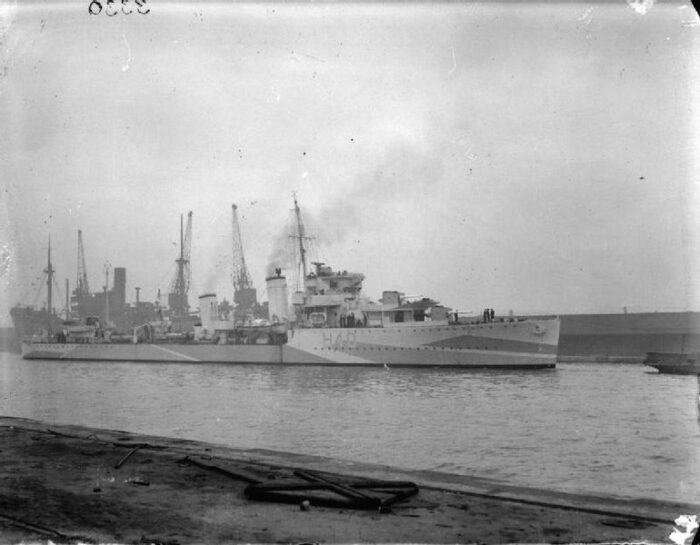
H%S Anthony was ordered from Scotts Shipbuilding and Engineering Company in Greenock, Scotland on 6 March 1928 (1927 Programme), laid down on 30 July 1928 and first launched on 24 April 1929, commissioned on 14 February 1930. She had the same career as her sisters in the 3rd Flotilla Mediterranea and when WW2 began she was with the 18th Destroyer Flotilla, Portland, patrolling the Channel and the South Western Approaches. In November she was reassigned to the 23rd Destroyer Flotilla, East coast. In January 1940 with Achates and Arrow she escorted the battleship Royal Sovereign to Halifax. In March 16th Destroyer Flotilla Portmouth, May 1940, Dunkirk evacuation. In several runs she evacuated 3,000 personnel. On 30 May she was damaged in an air attack, repaired until June, Harwich. With the Home Fleet she escorted convoy later with the 12th Destroyer Flotilla at Greenock, September. On the 27th she rescued survivors from the City of Benares.
By November she was with the 4th Escort Group, Western Approaches and by February as damaged in an air raid on the River Clyde, repaired, back with the 3rd Destroyer Flotilla (December). She escorted minelaying operations. On 23 May 1941 she escorted Hood and Prince of Wales racing towards the Bismarck. She was detached to refuel in Iceland on 24 May and joined Prince of Wales afterwards. She had operations off Norway in July and August, notably Operation Gauntlet on Spitsbergen.
On 29 August she escorted convoy PQ 1and QP 1. She had a short refit in the Humber and was reassigned to Gibraltar in January 1942, escorting convoys and back and some to Malta. In late March she joined Force H for Operation Ironclad on Madagascar.
There, Admiral Syfret dispatched Anthony to dash straight past the harbour defences of Diego Suarez, landing 50 Royal Marines in rear area to take on the defenses. The city surrendered on 7 May.
In May, Anthony was back in the Mediterranean, by September she escorted Royal Sovereign to the US for a refit. In October she escorted troop convoys for Operation Torch and was refitted afterwards, joining the 13th Destroyer Flotilla in early 1943, for escorts along the West African coast, Western Mediterranean. She took part in Operation Husky in Sicily. By 24 February 1944 with Wishart she took part with the RAF and US Navy sank in the sinking of U-761 of Gibraltar. She escorted convoys to the Western Approaches and Channel and by 24 December 1944 with Brilliant escorted the troopship Leopoldville, when sunk by U-486. By early 1945 given her poor state she was converted as air target ship, train new aircrew until PO by January 1946, reserve on 27 March, reactivated for damage control trials until February 1948, sold for BU 21 February, from May 1948.
 HMS Ardent (H 41)
HMS Ardent (H 41)

Ardent was ordered on 6 March 1928 from Scotts, 1929 Naval Programme, laid down at Greenock on 30 July 1928, launched on 26 June 1929, completed on 14 April 1930 and commissioned at Chatham on 23 April, 3rd Destroyer Flotilla, Mediterranean, sailing for Gibraltar on 19 May.
She had a few maintenance problems, refits at Malta but quickly paid off in reserve. On 8 September 1936 she took part in non-intervention patrols off the Spanish coast and was the Senior Naval Officer’s ship at Barcelona. After a long refit at Sheerness until 20 April 1938 she was assigned to Devonport as emergency destroyer and on 24 September fully crewed in the Munich crisis. After another refit at Devonport she became a boys’ training ship, and had another refit until 23 August 1939, assigned to the 18th Destroyer Flotilla, Portland, Channel Force.
She escorted Courageous CBG looking for U-boats in the Western Approaches, then Western Approaches Command, escorting 17 convoys until April 1940. On 31 January 1940 with Whitshed she escorted Ajax into Plymouth. Home Fleet, 13 April, thr escorted Convoy NP1 to Narvik but diverted to Harstad for landings and support on 5–16 April. 29/30 April covered the Polish destroyer Błyskawica with 150 men Scots Guards to Bodø. She damaged her ASDIC dome, repaired 6–19 May. Escorted the troopship SS Ulster Prince to the Faroe Islands (Operation Valentine) and back to Greenock. 31 May with Acasta, Acheron, Highlander and Diana, escorted Ark Royal and Glorious for Operation Alphabet, remained until early June.
She escorted Glorious back to Scapa on 8 June with her sister Acasta when caught by Scharnhorst and Gneisenau. Ardent was depatched to recgnoise the German ships and was fired upon, first to be hit in the first salvo. A 280 mm shell landed in her forward boiler room, she lolt half her speed but zigzagged to evade shells under smoke. She made repeated torpedo attacks, all evaded by Scharnhorst. She also landed a few 4.7-inch shells but no serious hit. At 17:01 she had no smoke left and was repeatedly hit, making a last pass, narrowly missed Scharnhorst with a torpedo at 17:13 but in flames, capsized after 17:25. Two survivors were recovered by a German seaplane five days later, one later died from exposure. The other two were repatrtiated in Britain 1943 due to poor health. Ardent sank with 10 officers and 142 ratings.
 HMS Arrow (H 42)
HMS Arrow (H 42)
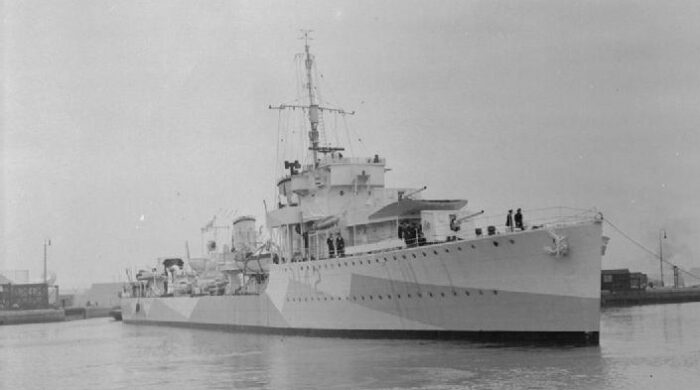
Arrow was ordered on 6 March 1928 (1927 Naval Estimates) and laid down on 20 August 1928 at Vickers-Armstrongs Yard No 642, launched on 22 August 1929 and completed on 14 April 1930 and later adopted by the civil community of the Rural District of Blackwell in Derbyshire from February 1942 after a Warship Week National Savings Campaign.4]
Like her sisters she served in the 3rd Destroyer Flotilla, Mediterranean Fleet until 1937. She had her turbine repaired at Chatham Dockyard in 1931 and several refit, between Chatham and Malta. On 20 February 1934 in night manoeuvres off Malta, she lost her engineer officer, which fell overboard. She had another refit at Sheerness Dockyard in April-June 1935 and during the Spanish Civil War she evacuating British nationals, and by 1 October 1936, 118 refugees from Málaga to Gibraltar. On 20 April 1937 she was sent to Málaga to monitor shipping on behalf of the International Non-Intervention Committee and food aid but left after protests from the Nationalist authorities, staying later in a three-mile limit. On 24 April, Republican destroyers Lepanto and Sánchez Barcáiztegui attacked Málaga, Arrow witnessing the action, and retiring when target by error by Nationalist coast defences.
After a refit at Sheerness she was in reserve until March 1938, then joined the local destroyer flotilla at Portsmouth.
In late 1939 she was in the 18th Destroyer Flotilla, Portland. 24 October 1939 saw her in Devonport for turbines fixes. From 10 January 1940, she joined the 16th Destroyer Flotilla Portsmouth and and 30 January Devonport for turbines fixes until 9 March 1940.
On 17 April 1940 she left Rosyth with Acheron escorting the cruisers Arethusa, Carlisle, Curacoa and Galatea carrying the 148th Infantry Brigade to Åndalsnes (Operation Sickle) arriving the following day. On the 22th she joined the 12th Destroyer Flotilla Home Fleet and on 24 April, escorted the cruisers Birmingham, Manchester and York, with Acheron and Griffin to Åndalsnes. On 26 April she left the Romsdalsfjord when bumping on a trawler flying the Dutch flag, later unmasked as the German Schelswig (Schiff 37) which attemped to ram Arrow, holing her above the waterline. Engaged by Arrow and Birmingham at close quarters, with the sailors picking revolvers and rifles, she sank. Schiff 26 (ex-Julius Pickenpack) was captured by Griffin nearby. Arrow was later repaired in the commerical shipyard, back on 13 May. On the 22th while patrolling with Fortune she spotted a periscope, Fortune dropping depth charges but it was a false alarm. From 29 to 31 May with Echo, Firedrake, Havelock and Vanoc she helped evacuating allied troops from Mo and Bodø. On 7 June during Operation Alphabet she escorted eight storeships from Harstad when air attacked on 9–10 June, repelled without loss. Nearby Ariadne and Prins Olav had less luck and she was detached and rescued about 80 survivors.
She had another refit in June, joined the 16th Destroyer Flotilla in Harwich on 4 July,and from 24 July, Western Approaches Defence Force in Greenock for convoy defence duties, North Western Approaches. On 16 August with Achates she attacked a U-boat attacking the AMC Cheshire. On 27 August she rescued survivors from a Greek steamer, on 13 September from the Greek merchant vessel SS Poseidon. On 8 October she escorted WS-3 in the Clyde and the cruiser Kenya and from mid-October Iceland convoys but she followed the last convoy as far as Freetown.
On 13 November she rescued survivors from SS Empire Hind. On 14 November she assisted the tanker MV San Demetrio, damaged by Admiral Scheer on 5 November. She had a refit at Barclay Curle (machinery fixed) back on 14 January 1941, 3rd Destroyer Flotilla, North Western Approaches and North Sea, Icelandic convoys from Aberdeen, Scapa Flow and Clyde.
24 March saw her escorting the convoy WS-7 and HMS Nelson, to Freetown. She had problems with her boilers and was repaired in Chatham, all re-tubed until by June. On 21 June she hit a mine off Flamborough Head and returned to Middlesbrough on one boiler. Repaired at Smiths Dock until October.
On 18 November she travelled to the Med with Gurkha, Zulu, Foxhound and HMAS Nestor, screening HMS Dido to Gibraltar, arriving on 21 November. Next she was in Malta on24 November and escorted Ajax, Lance and Lively for convoy ME-8 to Alexandria. On 12 January 1942 she was torpedoed but missed by an U-Boat. She sezarch for the sunken HMS Hero. On 24 January she escorted Malta convoy MF-4 and the cruiser Penelope, DDs Lively, Legion, Maori and Zulu (Force K). Then Force B and Convoy ME-9.
On 12 February she screened the cruisers Naiad, Dido and Euryalus for convoys MW-9 and MW-9A, with air attacked on 13 February until 14 February. The she escorted MW-9 with Force K. In March she was the first of her class sent to the Eastern Fleet.
She was in Gan on 4 April, escorting Ramillies, Royal Sovereign, Resolution and Revenge, the carrier Hermes, cruisers Caledon, Dragon and the HNLMS Jacob van Heemskerck plus 8 destroyers as Force B. On 6 April wshe was in Kilindini after the loss of Hermes and Ceylon raids. On 15 April she eescorted convoys between Madagascar and Good Hope. She was withdrawn on 20 May after more machinery troubles, in Durban on 21 May for a refit until 2 July. She took part in the final occupation of Madagascar.
With Active, Blackmore and Inconstant, 3rd DesDiv Force M she was in escort for the landings at Majunga. Next she was in West Africa for convoy duties, South Atlantic. In November machinery defects had her sent to UK and a commercial shipyard at Middlesbrough until March 1943. She struck the boom defences at Scapa on 10 April, sent to London for repairs at Silley Weir at Blackwall until May, back to Scapa Flow. On 3 June 1943 she was sent to the 13th Destroyer Flotilla at Gibraltar. With Blankney, Blencathra, Brecon, Brissenden, Hambledon, Ledbury, Mendip, Viscount, Wallace, Witherington and Woolston she escorted KMF-17 to Gibraltar and WS-31 to the Middle East-India then WS-31 to Freetown and KMF-17 to Gibraltar. She was assigned the Support Force East for the landings in Sicily on 10 July.
While at Algiers on 4 August the explosion of nearby merchant ship Fort La Montee had her showered with fmaed debris, and she sustained heavy damage, with many casualties, completely disabled. She was towed to Gibraltar on 18 September for temp. repairs until October, then Taranto for permanent repairs from 27 November but a survey by September 1944 showed many other issues and on 17 October repair work was suspended. She was stripped in December, and from January 1945, hulked in Taranto until May 1949, BU.
 HMS Acheron (H45)
HMS Acheron (H45)
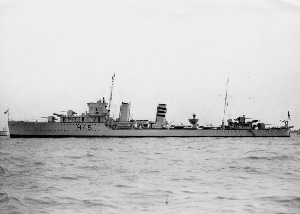 Acheron was ordered on 29 May 1928 at Thornycroft yard in Woolston, Hampshire under the 1927 Estimates, laid down on 29 October 1928, launched on 18 March 1930, commissioned on 12 October 1931. Like Arrow, she suffered many machinery issues during her career. She had at the time the new high high pressure boilers, but convinced the Admiralty not to continue with this. Trials were delayed until June 1932, and on 17 October 1932, five workmen were overcome by fumes while in Portsmouth dockyard, sent to Hospital.
Acheron was ordered on 29 May 1928 at Thornycroft yard in Woolston, Hampshire under the 1927 Estimates, laid down on 29 October 1928, launched on 18 March 1930, commissioned on 12 October 1931. Like Arrow, she suffered many machinery issues during her career. She had at the time the new high high pressure boilers, but convinced the Admiralty not to continue with this. Trials were delayed until June 1932, and on 17 October 1932, five workmen were overcome by fumes while in Portsmouth dockyard, sent to Hospital.
On 19 October 1932, she joined the 3rd Destroyer Flotilla, Mediterranean but back home several time for repairs. Her last from July 1936 to February 1937.
She replaced Ambuscade as tender to HMS Vernon torpedo school, was fitted with Asdic and in November collided with a barge off Portsmouth, teared on 20 ft (6.1 m) above the waterline and under repair until 6 December. She was an emergency destroyer at Portsmouth and by March 1938, refitted again in Portsmouth until December. By January 1939, she replaced Windsor as a gunnery training destroyer, HMS Vernon. By September 1939, she was still under repair at Portsmouth.
She served with the 18th Destroyer Flotilla, local duties, and again in machinery repairs at Portsmouth until 23 March 1940. 16th Destroyer Flotilla, Home Fleet, North Western Approaches, then deployed to support of the military landings in Norway.
On 17 April, wuth Arrow she left Rosyth to escort cruisers for Operation Sickle with the 5th Leicestershire and 8th Sherwood Foresters at Åndalsnes and Molde. There was nater another run to Åndalsnes and she was in Romsdalsfjord on 26 April. She took part in the fight against German Schelswig (Schiff 37) which rammed Arrow and later Schiff 26 (ex-Julius Pickenpack), boarded by Griffin, interned to Scapa Flow. From 30 April 1940 with Antelope and Beagle she escorted Glorious and joined Ark Royal on 1 May to cover the allied evacuation from Åndalsnes, Molde and Namsos. Later she was in another evacuation convoy from Namsos.
On 31 May she escorted the same carriers for Operation Alphabet and later resumed normal duties and English Channel escorts.
On 21 June she was upgraded. Whilst sailing 10 mi (16 km) south off St. Catherine’s Point, 20 July, she was attacked by German Stukas, badly damaged by nine near misses, repaired at Portsmouth on 6 August, she was alongside the destroyer Bulldog during another air attack. Three near misses, but one hit in her aft section. Bulldog had splinter dmage. She was repaired until October but made a gunnery training destroyer. On 17 December while trainined off the Isle of Wight at night in heavy seas and strong north-east wind for sea trials over a measured mile she struck a mine and sank within four minutes with 196 crewmen and yard workers, 19 survivors.
Career of the B class
 HMS Basilisk (H11)
HMS Basilisk (H11)
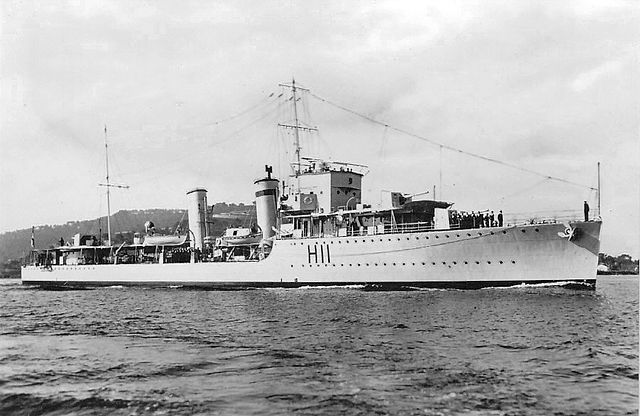
Basilisk was ordered on 4 March 1929 from John Brown (1928 estimates), laid down on 19 August 1929, launched on 6 August 1930, completed on 4 March 1931 and assigned to the 4th Destroyer Flotilla (all B class, led by Keith) Mediterranean Fleet, until 1936, then Home Fleet in September.
On 6 August 1936, she was involved in a Spanish Civil War incident, the Convoy de la Victoria, shelled and straddled by the nationalist gunboat Dato off Gibraltar. The gunboat misidentified her as one of the republican destroyers of the Churruca class, which were indeed close to to the A/B class in design. In February 1937, Basilisk was in Málaga, Spain, captured by the Nationalists, to release Sir Peter Chalmers Mitchell (British zoologist) arrested due to his support of the Republicand. Bailisk became an emergency destroyer at Devonport from March 1939, assigned to the 19th Destroyer Flotilla.
After two months escorting convoys she escorted the minelayer Adventure with her sister HMS Blanche in the Thames Estuary when entered a german minefield and both the minelayer and blanche struck mines, o,e capsized under tow. On 24 April she teamed with Wren and Hesperus to escort HMS Resolution to Narvik and in May, escorted the troopship Empress of Australia, covering the landings on 12–13 May at Bjerkvik (Battle of Narvik).
She was sent to the Western Approaches Command on 30 May and took part in the evacuation from Dunkirk, Operation Dynamo, saving 695 men in two tripe. When back to La Panne on 1 June she was attacked by Stukas. One bomb found its way inher No. 3 boiler room. She lost all power while near misses pepered and buckled her hull so she was flooded. Torpedoes and depth charges were jettisoned while the French fishing trawler Jolie Mascotte attempted to tow her, and she survived a second attack. The third around noon sank her in shallow water. Jolie Mascotte and HMS Whitehall rescued 8 officers and 123 crewmen and what remained was wrecked by gunfire and torpedoes.
 HMS Beagle (H30)
HMS Beagle (H30)

HMS Beagle was ordered on 4 March 1929 from John Brown (1928 Programme), laid down on 11 October 1929, launched on 26 September 1930, completed on 9 April 1931 and versed to the 4th Destroyer Flotilla, Mediterranean until 1936. She was in Jaffa in the Arab Revolt and in the Home Fleet in September 1936, had a refit at Devonport until January 1937 and acted as plane guard for HMS Furious. After another refit until 3 January 1939 she was plane guard for HMS Argus, colliding with Basilisk, repaired in April–May reassigned to Furious, then in refit by 3 September.
Under Lt. Royston Hollis Wright, she served with the 19th Destroyer Flotilla until April 1940 escorting convoys with a refit between December 1939 and 22 January 1940. She escorted convoys between Orkney and Narvik and later evacuated British troops and civilians from St. Nazaire and Bordeaux, rescued 600 survivors from SS Lancastria on 17 June.
With the 1st Destroyer Flotilla (Dover) from July she was attackd by Ju 87 Stuka on 19 July, repaired at Devonport until 16 August, transferred to the 22nd Destroyer Flotilla, English Channel. Then Home Fleet for escort of Argus to Iceland and West Africa. On 4 November Beagle she rescued 230 from AMC HMS Patroclus. Under Lt.Cdr. Richard Taylor White in February 1941 she was assigned to the Western Approaches Command, 4th Escort Group between the Clyde and Iceland. She was later converted into an escort destroyer until April 1942. Under Cdr. Ralph Cyril Medley she escorted Convoy PQ 14 to Murmansk in April, QP 11 and took part in the defense on 1 May, damaged by splinters from German destroyers. She escorted convoys and was versed to Force H for Operation Torch and escorted the Convoys JW 51A, RA 51, and JW 52 to and from Russia.
After a modernization she was based in Freetown, Sierra Leone by early 1943 as local escort until November. then convoys to and from Russia until May 1944, 8th Escort Group. With JW58, she assisted in sinking U-355 on 1 April with aircrafts from HMS Tracker. She took part in Operation Overlord and rescued 250 survivors from LSTs 18 miles NE of Barfleur (Convoy ECM1P) after an E-boat attack. Her crew claimed two Ju 88 also in June. After a refit at Sheerness until September she was back with the 8th Escort Group but had aother refits in December 1944 and February 1945. She was transferred to Plymouth Command on 11 March 1945 for escort and then blockaded German-occupied ports in France in April. She landed troops at St Helier (Jersey) on 9 May 1945 to accept the surrender, signed by the staff at the Pomme D’Or Hotel. Bulldog did the same at Guernsey.
She was in reserve 15 days later, sold on 22 December, towed 15 January 1946 at Rosyth and BU.
 HMS Blanche (H 41)
HMS Blanche (H 41)
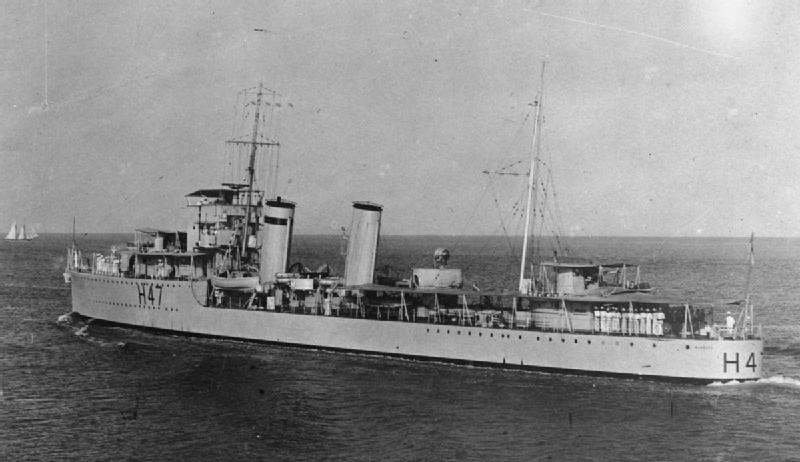
Ordered on 4 March 1929 from Hawthorn Leslie, 1928 Programme, she was laid down on 29 July 1929, launched on 29 May 1930, completed on 14 February 1931 and assigned to the 4th Destroyer Flotilla, Mediterranean Fleet until 1936.For six months she patrolled southern Spanish coast (Civil War) from Gibraltar, evacuating British citizens and travellers and on 6 April 1937, she took part in a serious incident: The Nationalist cruiser Almirante Cervera, blockading the north of Spain, stopped the British merchant ship Thorpehall carrying relief food off Bilbao and nearby Blanche and Brazen answered distress signal. They rushed forward, and Cervera wihdrew. However she was later attacked by five Nationalist bombers on 6 March 1938, which missed. After an overhaul at Portsmouth (1 April to 11 June 1938) she was in the Portland ASW flotilla and during the Munich Crisis, escorted RMS Aquitania and HMS Revenge in the Channel on 30 September. After another refit in Sheerness until 15 July 1939 she became an emergency destroyer at the Nore.
Post Sepetmber she was assigned to the 19th Destroyer Flotilla and until November escorted two months escorting convoys. With Basilisk she escorted the minelayer Adventure on 13 November in the Thames, when she struck mines as well as Blanche. She lost all power and capsized at 0950 with one man killed, 12 wounded, first British destroyer sunk in this war.
 HMS Boadicea (H 65)
HMS Boadicea (H 65)
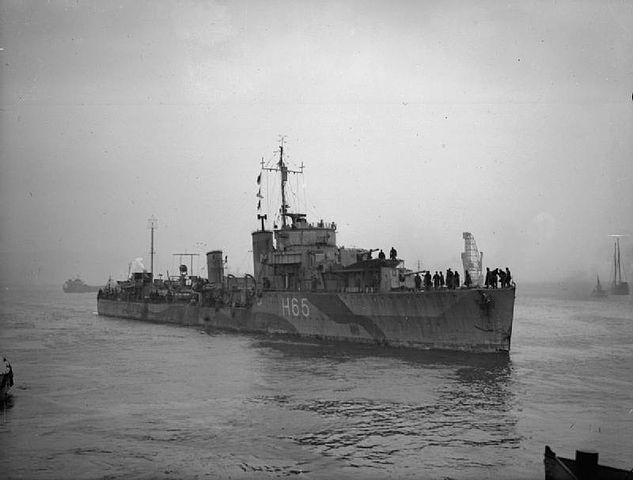
Boadicea was ordered on 4 March 1929 from Hawthorn Leslie, 1928 Programme, laid down at Hebburn-on-Tyne on 11 July 1929, launched on 23 September 1930, completed on 9 April 1931 and assigned to the 4th Destroyer Flotilla, Mediterranean Fleet until 1936. Whilst refuelling with the Revenge she was damaged on 15 March 1935, repaired until 18 April. She was deployed to Famagusta, Cyprus, and Haifa in Palestine putting down riots until January 1936 and returned lter to Haifa in June for the Arab Revolt. In the civil war she was deployed at Cartagena and Valencia to evacuate civilians.
She ahd a refit at Portsmouth until 26 September and from January, she made multiple deployments off Spain for the embargo until April, then refitted. She became later plane guard for aircraft carriers of the Mediterranean Fleet and emergency destroyer at the Nore, then Reserve Fleet at Portland, taking part in the Fleet Review in August 1939. On 29 August she joined the 19th Destroyer Flotilla at Dover, escorting BEF troopships to France until October. Transferred to the 22nd Destroyer Flotilla at Harwich she returned to the 19th, escorting convoys in the Channel and on 4 March 1940, towed the mine-stricken oil tanker Charles F. Meyer to Southampton. After a new refit at Chatham on 2 May she was at Le Havre on 9 June to assist evacuating British troops and fired on advancing German troops. She was attacked the same day by Ju 87 Stuka which destroyed her her engines and boilers. After depth charges and torpedoes were jettisoned she was patched uop enough to be towed back by HMS Ambuscade and tugboat Krooman to Dover.
After full repairs on 14 February 1941 she was sent to the Home Fleet, taking part in the search for Scharnhorst and Gneisenau. In March she joined the 4th Escort Group at Greenock, until February 1942, disbanded. She served under the Western Approaches Command until July, escorted Convoys PQ 15 and Convoy QP 12 (Murmansk) in April–May 1941, was refitted in August and October and escorted a convoy to Gibraltar before Operation Torch, later another to Oran but was hit from Vichy French L’Adroit on 8 November, little damage. She escorted back home the ocean liner RMS Viceroy of India when she was torpedoed. She failed to take her under tow but rescued 449 passengers and crew, landed them to Gibraltar. Next she joined the 20th Escort Group with Convoys JW 51A, JW 53 and RA 53 to and from Russia, badly damaged by sea ice in March, repaired until May 1942.
Transferred to Freetown, she became a local escort. On 19 July, she rescued 220 from MV Incomati. Back to the Home Fleet in September she served with the 8th Escort Group and was converted as an escort destroyer in November until January 1944, back to the 8th Escort Group, escorting Convoys JW 57, RA 58 and RA 59 to Russia until April. She took part in Operation Overlord, transferred to Portsmouth for convoys arriving in England and across the Channel. She was sunk on 13 June off Portland by German aircraft whil escorting merchant ships to France. Some sources affirms these were Fritz X missiles from Dornier Do 217s of KG 100, or torpedoes from Ju 88s. The magazine explosion broke her in half, and she lost 12 of her crew. Her wreck site was explored and isdesignated as a protected place under the Protection of Military Remains Act 1986.
 HMS Boreas (H 77)
HMS Boreas (H 77)
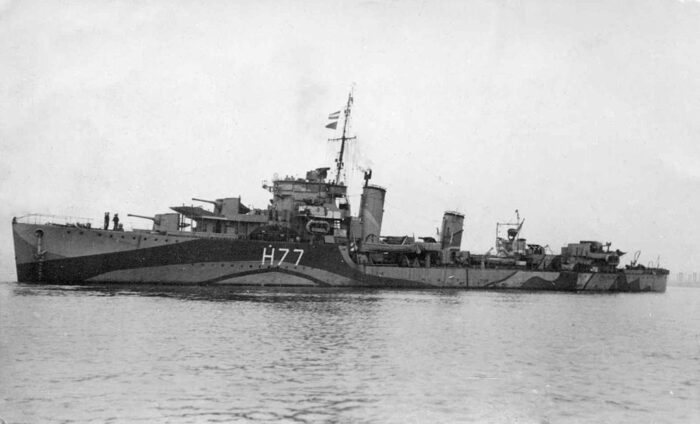
Boreas was ordered on 22 March 1929 from Palmer’s at Jarrow, 1928 Naval Programme, laid down on 22 July 1929, launched on 11 June 1930, completed on 20 February 1931 and assigned to the 4th Destroyer Flotilla (Mediterranean) and in 1936 to the Home Fleet. In July 1936 before her departure she evacuated civilians at the start of the Spanish Civil War.
After a refit at Portsmouth until 26 September she returned to Spain in 1937 and 1938. On 6 March 1938, she rescued survivors of the heavt nationalist cruiser Baleares, off Cartagena, alongside HMS Kempenfelt. She had another refit at Portsmouth until June and escorted the royal yacht Victoria and Albert in Scotland that summer. 4 August. Sher escorted Revenge and the RMS Aquitania during the Munich Crisis. She was still with the 4th Destroyer Flotilla until April 1939 and acted as plane guard for a few aircraft carriers.
In September 1939, she joined the 19th Destroyer Flotilla on escort/patrol, Channel/North Sea. She assisted the badly damaged minesweeper Sphinx on 4 February 1940 but her own stern was damaged and she needed repairs. Next she was attached to the 12th Destroyer Flotilla on 29 March, damaged in a collision with Brilliant on 15 May, repaired until 19 June. Next she joined the 1st Destroyer Flotilla at Dover. On 25 Jul engaged German E-boats off Dover with Brillian, badly damaged when Ju 87 Stuka arrived in support and bombed them when ordered to withdraw. Her bridge was hit twice and she ended in repairs at Millwall Dock until 23 January 1941, being further damaged by German bomb splinters on 19 January.
Assigned to the Western Approaches Command she joined the 18th Destroyer Flotilla at Freetown from 28 April, escorted Convoy HG 70 on 10 August to Gibraltar, rescued survivors from four ships and was refitted at South Shields until 4 January 1942, back in escort on the 25th and sent to Alexandria in November from the Cape of Good Hope. Boreas took part in Operation Stoneage to Malta. From January 1943 she joined the 13th Destroyer Flotilla at Gibralta, sailed to Freetown in February and escorted convoys until June, took part in Operation Husky and converted afterwards as escort destroyer in Liverpool until February 1944. Unlike the others, she was was loaned to the Royal Hellenic Navy on 10 February 1944 as “Salamis”. She had a last refit from 28 April to 13 June and was in escort duty at Gibraltar until October, then the Aegean and 12th (Greek) Destroyer Flotilla until September, TS afterwards returned to the RN at Malta on 9 October 1951, Rosyth under tow 1952, BU.
 HMS Brazen (H 80)
HMS Brazen (H 80)
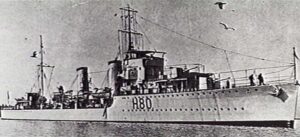 Brazen was ordered on 22 March 1929 from Palmers, 1928 Programme, laid down on 22 July 1929, launched on 25 July 1930, completed on 8 April 1931, assigned to the 4th Destroyer Flotilla (Mediterranean) until late 1935. Refit Devonport August-October 1933 and Malta later, assigned to the Home Fleet 1936, part of the rescue of Thetis in June 1939.
Brazen was ordered on 22 March 1929 from Palmers, 1928 Programme, laid down on 22 July 1929, launched on 25 July 1930, completed on 8 April 1931, assigned to the 4th Destroyer Flotilla (Mediterranean) until late 1935. Refit Devonport August-October 1933 and Malta later, assigned to the Home Fleet 1936, part of the rescue of Thetis in June 1939.
Assigned to the 19th Destroyer Flotilla, seven months escorting convoys Channel/North Sea. 13 October saw her rescuing 3 survivors from U-40, hitting a mine. With HMS Encounter she escorted HN12 after Daring was sunk by U-23, rescuing survivors from Sangstad. Later she escorted capital ships for their North Sea sweep on 7 April. She was detached to cover a convoy to Namsos on 13 April and sank U-49 with Fearless near Harstad, rescued 41 of her crew. She escorted more convoys to and from Norway.
On 30 May, she was sailing to Harwich hitting a submerged wreckage, repaired for five weeks. Joined the 1st Destroyer Flotilla in Dover for coastal convoys. With CW7 on 20 July, she was targeted by Ju 87 Stuka from II./Sturzkampfgeschwader 1 and took several near misses. Her keel broke and she had a direct hit in the engine room, sinking slowly enough for all but one of the crew to tbe rescued, with gunners claiming three Stukas, two confirmed.
 HMS Brilliant (H84)
HMS Brilliant (H84)
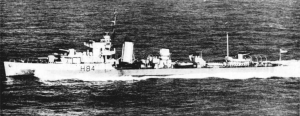 Brilliant was ordered on 22 March 1929 from Swan Hunter, 1928 Programm, laid down on 8 July 1929, launched on 9 October 1930, completed on 21 February 1931 and assigned to the 4th Destroyer Flotilla until September 1936, then Home Fleet. On 31 December 1935 she rescued a suvivor from Imperial Airways Short Calcutta flying boat “City of Kharthoum” off Alexandria. She became guard ship at Málaga from July 1936. and on 24 August she rescued the crew of the Greek steamer Atonis G. Lemos when colliding with leader HMS Keith in thick fog north of Alderne. She took part in the arms blockade off Spanish ports and Bay of Biscay. On 6 March 1938, with Blanche she was attacked by Nationalist bombers off Southern Spain, no damage as the error was quickly recoignised.
Brilliant was ordered on 22 March 1929 from Swan Hunter, 1928 Programm, laid down on 8 July 1929, launched on 9 October 1930, completed on 21 February 1931 and assigned to the 4th Destroyer Flotilla until September 1936, then Home Fleet. On 31 December 1935 she rescued a suvivor from Imperial Airways Short Calcutta flying boat “City of Kharthoum” off Alexandria. She became guard ship at Málaga from July 1936. and on 24 August she rescued the crew of the Greek steamer Atonis G. Lemos when colliding with leader HMS Keith in thick fog north of Alderne. She took part in the arms blockade off Spanish ports and Bay of Biscay. On 6 March 1938, with Blanche she was attacked by Nationalist bombers off Southern Spain, no damage as the error was quickly recoignised.
From September 1939, Brilliant she joined the 19th Destroyer Flotilla at Dover, split between convoys and minelaying operations escort. She collided with the breakwater at Dover on 12 September (six weeks of repairs) and on 12 May 1940, was in Operation XD, destroying Dutch port facilities and taking 100 evacuees. On 15 May she collided with Boreas off the Hook of Holland, repaired at Sheerness until 17 June. She joined the 1st Destroyer Flotilla at Dover but after the losses of the Dunkirk evacuation her unit was disbanded and on 25 July, she duelled with German E-boats off Dover, attacked by Ju 87 “Stuka” when withdrawing. She fought at some point eight Stukas and was hit by two bombs, passed through without exploding, no injurines, but steering gear disabled. She became a sitting duck, flooded by the stern, lightened by jettisoning her aft guns, depth charges, towed back to Dover, repaired at Chatham until mid-October.
She served with the Home Fleet until February 1941, refitted at Southampton, sent to Freetown as local escort until April 1942, refitted at Chatham. On 4-5 June she escorted the cruiser HMS London, catching the German oil tankers MV Esso Hamburg and SS Egerland, which scuttled themselves to prevent capture. Later HMS Brilliant became leader of the 18th Destroyer Flotilla.
She escorted a convoy to Durban by May 1942 and back in Freetown in August. On 9 October 1942, she rescued 321 from the troopship HMT Oronsay, torpedoed by Italian sub Archimede. She joined Force H for Operation Torch, in November, providing naval gunfire support at Oran, and silenced the Vichy French minesweeper Surprise, rescuing 21 survivors. She served with Escort Group 61 until January 1943 and back home was refitetd and converted as escort destroyer, reassigned to the 13th Destroyer Flotilla, Gibraltar from July 1943, until September 1944 and new refit at Portsmouth. Next she was sent to the 1st Destroyer Flotilla, Channel in November and on 24 December escorted Leopoldville (empty of troops) when hit by U-486 off Cherbourg. She rescued 500 survivors but still 764 died. She later collided with the corvette HMCS Lindsay in fog, 21 January 1945 off Isle of Wight, bow was badly damaged, repaired at Antwerp in Belgium and Portsmouth but they were never completed and instead on 23 April she was converted at Portsmouth as submarine target/escort vessel on 26 May.
She escorted Jamaica with King George VI aboard to Channel Islands on 7 June and on the 13th escorted surrendered U-Boats in Holy Loch, Scotland (Operation Deadlight), then paid off into reserve by November, Category C 29 April 1946, Target Trials from September, tested with a 1,090-pound (490 kg) underwater explosion, April 1947. Survived, sold to BISCO for BU by February 1948.
 HMS Bulldog (H91)
HMS Bulldog (H91)
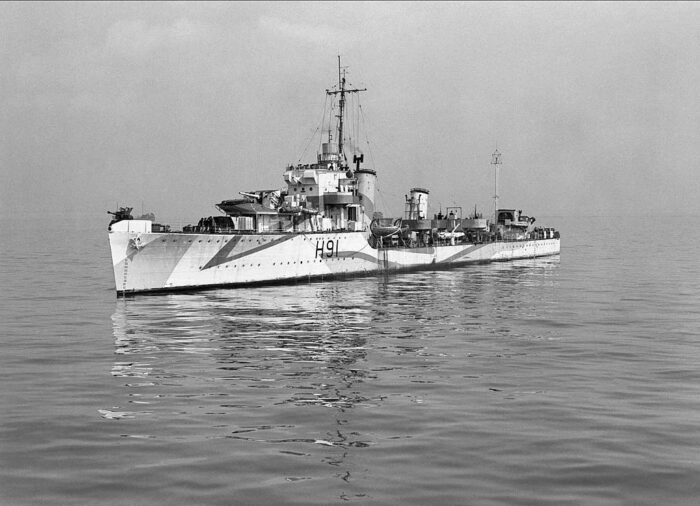
Bulldog, the last of the A/B class, was ordered on 22 March 1929 from Swan Hunter, 1928 Programme, laid down on 10 August 1929, launched on 6 December 1930, completed on 8 April 1931 and assigned to the 4th Destroyer Flotilla until September 1936, then Home Fleet. She rprovided relief to 1932 Ierissos earthquake survivors, patrolled southern Spanish waters in 1936 refitted at Gibraltar 1935 and Malta 1936. She later spend a lot of time at Chatham, until 9 January 1937. In January 1938 she returned to Spain, enforcing the arms embargo until 31 March 1938, and refitted ay Sheerness. She escorted HMS Resolution to Scapa Flow in September (Munich Crisis) and returned to Gibraltar in January 1939, plane guard for Glorious in March.
In October she followed Glorious, Malaya and Daring as the Indian Ocean Hunting Group from Socotra. She was refitted at Malta with Glorious by January 1940, then Ark Royal in March. In April her water heater was replaced at Devonport On 9 May she escorted the cruiser Birmingham and thirteen destroyers in the Skagerrak, looking for German minelayers. They briefly fought E-boats. One torpedoed Kelly the next day and she towed her to Hebburn, herself repaired by Swan Hunter until 21 May and her propellers on 27 May, then at Chatham until 4 June, transferred to the 1st Destroyer Flotilla. She took part in Operation Dynamo, at Le Havre on 9 June, and Operation Cycle, taking three near-hits from German aircraft. She lost her steering gear but her crew repaired her so she could returned to Portsmouth, further damaged after an air raid on 24 August, repaired until 2 September. Refitted at Cammell Laird until 18 February 1941 she joined the 3rd Escort Group for escorts to and from Iceland under Capt. Joe Baker-Cresswell. Detached with Amazon and Rochester, she damaged U-94 on 7 May with OB 318.
After Aubrietia depth-charged U-110, she surfaced and was fired on by Bulldog and Broadway until abandoned. A boarding party removed the Enigma coding machine, maps and codebooks quite a coup for allied intel*. Bulldog took her in tow but she sank the following morning. Later at Fairfields, Govan she was converted as escort destroyer until February 1942. Assigned to the Western Approaches Command, 10 February 1942, assisted Richmond after her collision with SS Francis Scott Key on 31 March with PQ 14. On 12 April, she sailed to Murmansk and on 28 April, escorted back QP 11. On the 30th, Edinburgh which joined the convoy was torpedoed by U-456 but survived two hits, towed back to Murmansk.
On 1 May the convoy was attacked by Z7, Z24, Z25 and Maxwell Richmond (Bulldog’s captain, escort commander) sent his four DDs to interpose, driving off the Germans afetr a three-hour battle. Bulldog was damaged by shell splinters only, repaired from 2 June to 14 August and joined the Greenock Special Escort Division. She escort convoys for Operation Torch and back. She had a new refit on 23 November to 14 December.
She joined JW 51B on 20 December, but needed weather repairs by 28 December until 16 January 1943, escorting more convoys Iceland-UK for two months, new repairs at Greenock 29 March to 22 April and sent to Freetown for escort between Lagos, Freetown and Gibraltar. By October she had an overhaul at Portsmouth until 24 May 1944. In June she escorted ships between Clyde and Faeroe Islands and spotted, sank U-719 with her hedgehog on 26 June.
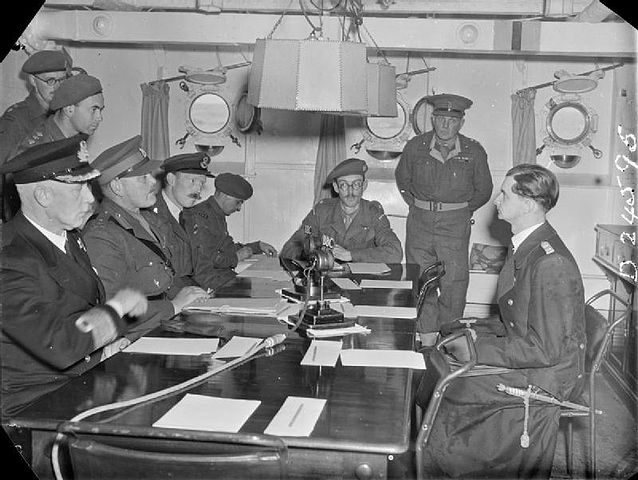
On 20 August, she had a collision with the Loch class frigate HMS Loch Dunvegan in Gourock Bay, repaired at Ardrossan until 4 September, returnd to convoy duties until having machinery repairs in November and until 30 January 1945. She escorted vessels between Plymouth and Irish ports and on 9 May 1945, sailed to Guernsey for its Liberation (photo) with the ceremony held aboard. She was placed in reserve on 27 May at Dartmouth, Rosyth on 27 November, sold for BU on 22 December, scrapped in 1946.
*The Captain of Bulldog realised the importance of what he recovered from U-110 were, and kept radio silence about the capture, having the prisoners isolated in Iceland and then Scotland. Later at Bletchley park, combining the Enigma machine and code books was a breakthough for the Cypher School, the codes being until 30 June 1941, six weeks of access to German communication and future German naval codes decryption much easier. Sub-Lieutenant Balme was awarded the DSC from the King.
Read More/Src
Books
Cocker, Maurice Destroyers of the Royal Navy, 1893-1981, 1983, Ian Allan
Conway’s All the World’s Fighting Ships, 1922-1946, Ed. Robert Gardiner, Naval Institute Press
M. J. Whitley Destroyers of World War II, An International Encyclopedia, Arms and Armour Press, 1988
Links
on navypedia.org/
dreadnoughtproject.org
en.wikipedia.org
ww2db.com/s
navypedia.org amazon.htm
hmsacasta.co.uk/
navypedia.org ambuscade.htm
navweaps.com/ WTBR_PreWWII.php
navweaps.com/ WAMBR_ASW.php
naval-history.net/ Codrington.htm
web.archive.org/ /scharnjuno.html
web.archive.org/ scharnjuno_acasta.html
uboat.net/allies/warships/ship/ acasta class
Model Kits
A class destroyer, HMS Ardent/ HMS Acasta by AJM Models No. 700-010 1:700

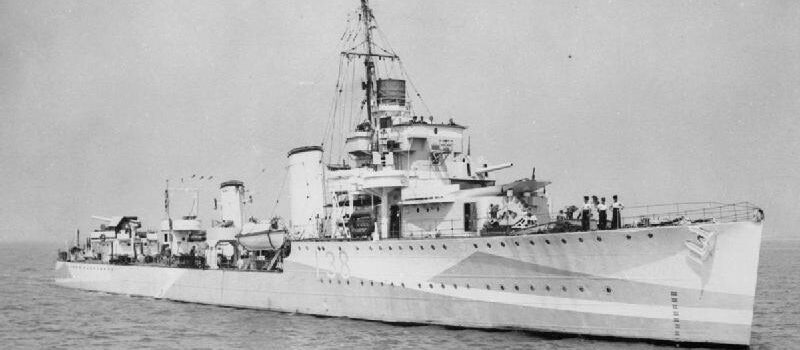
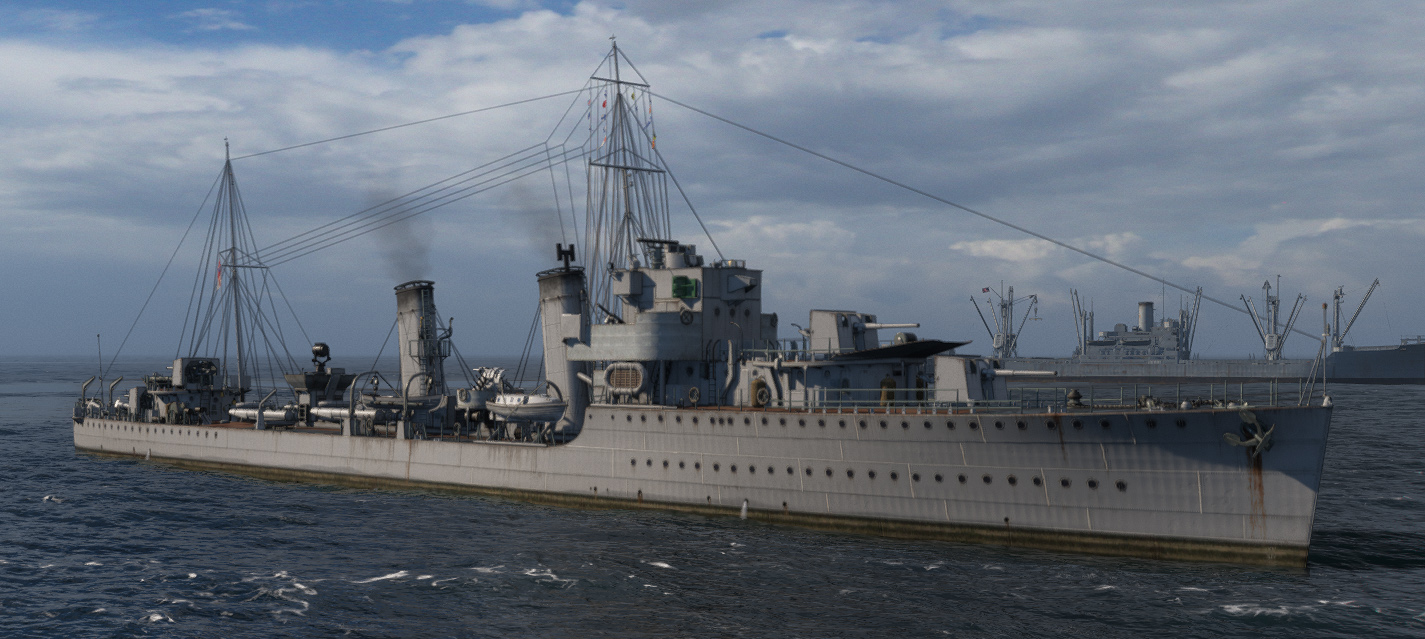
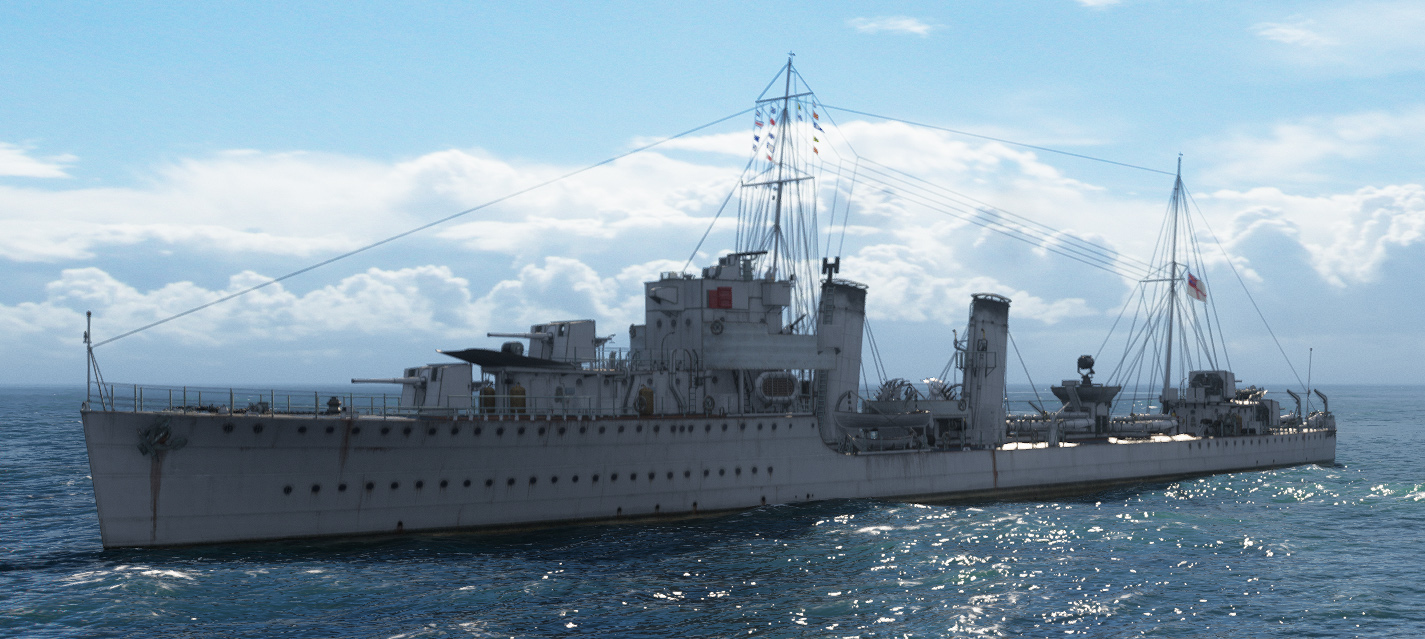
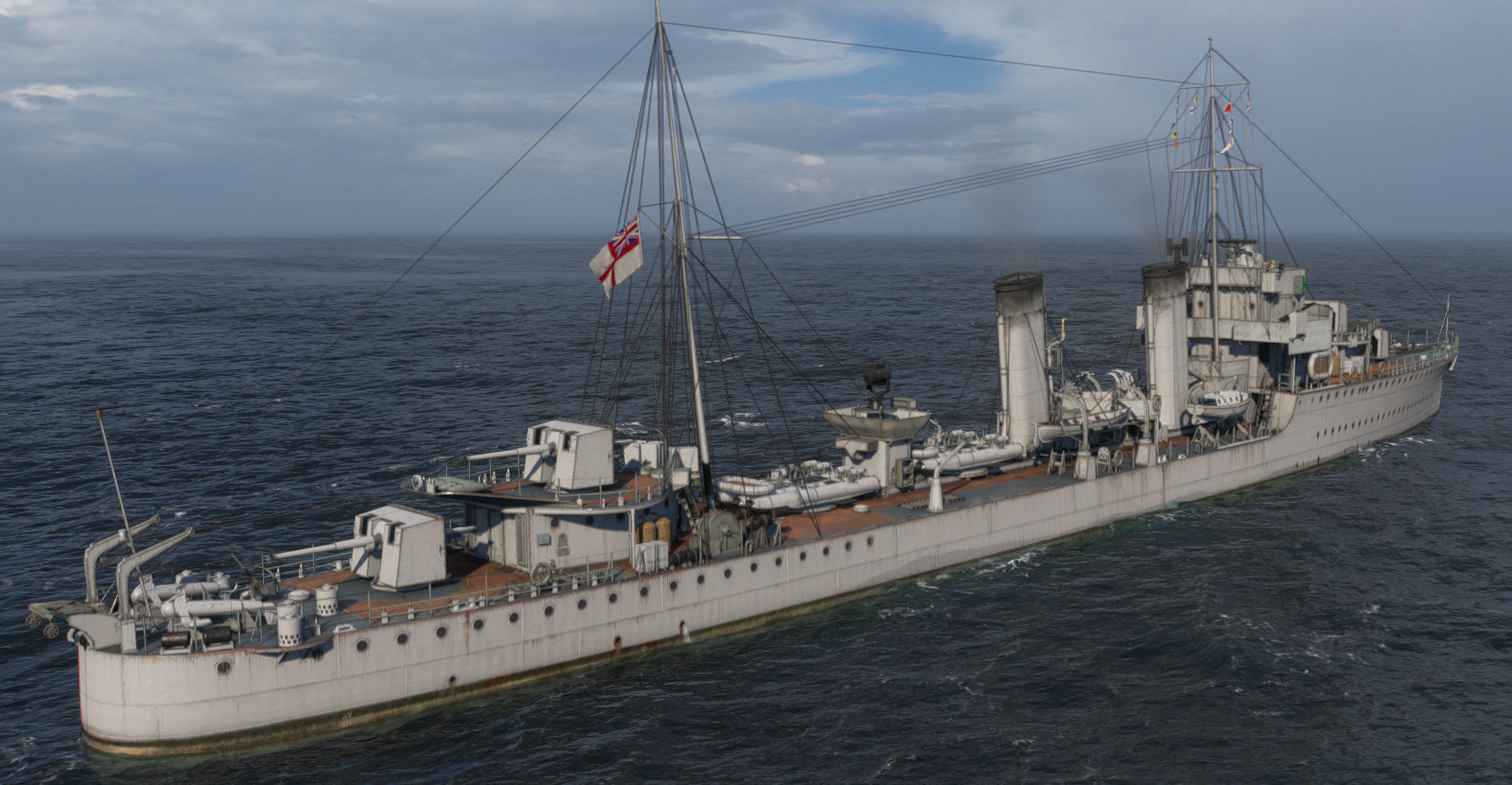
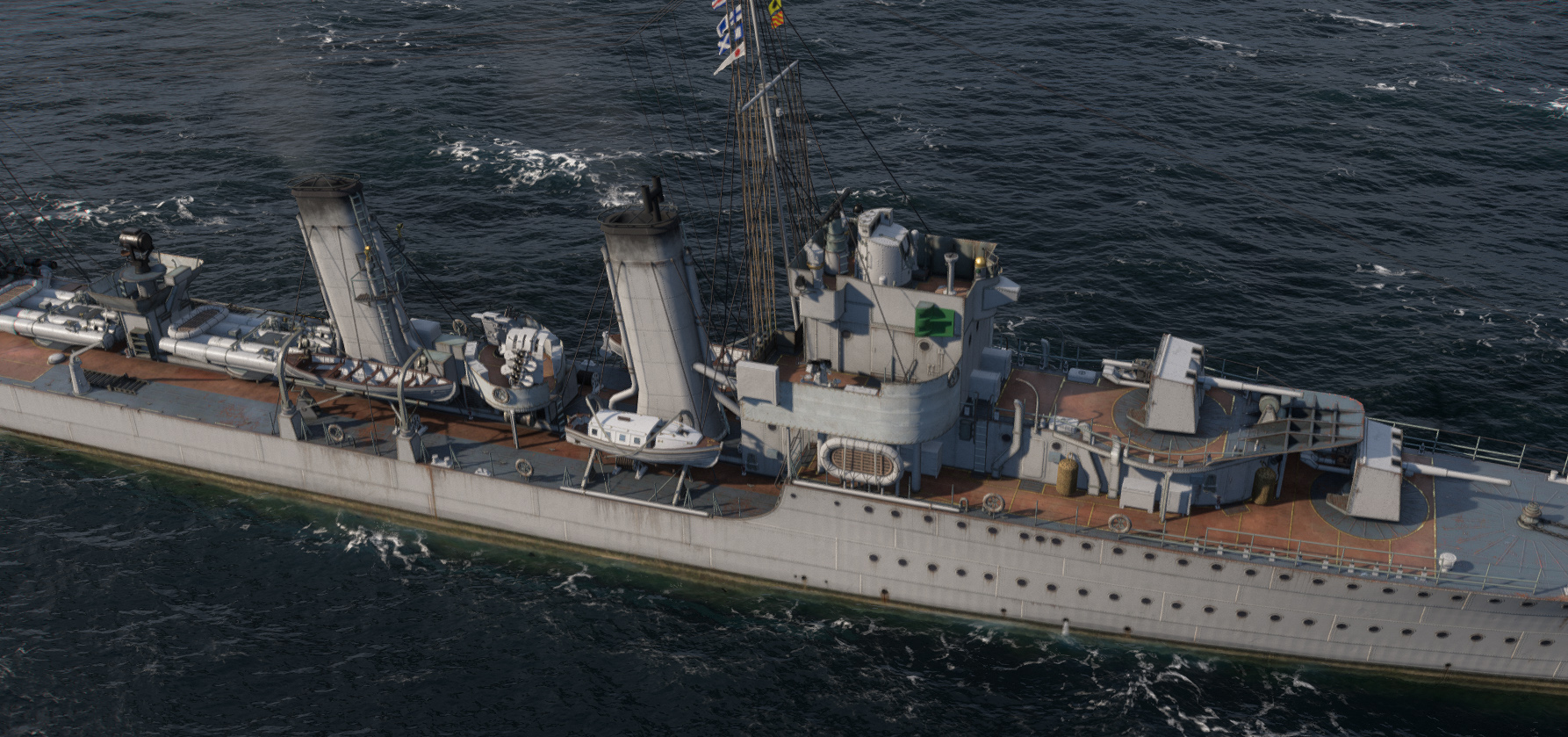

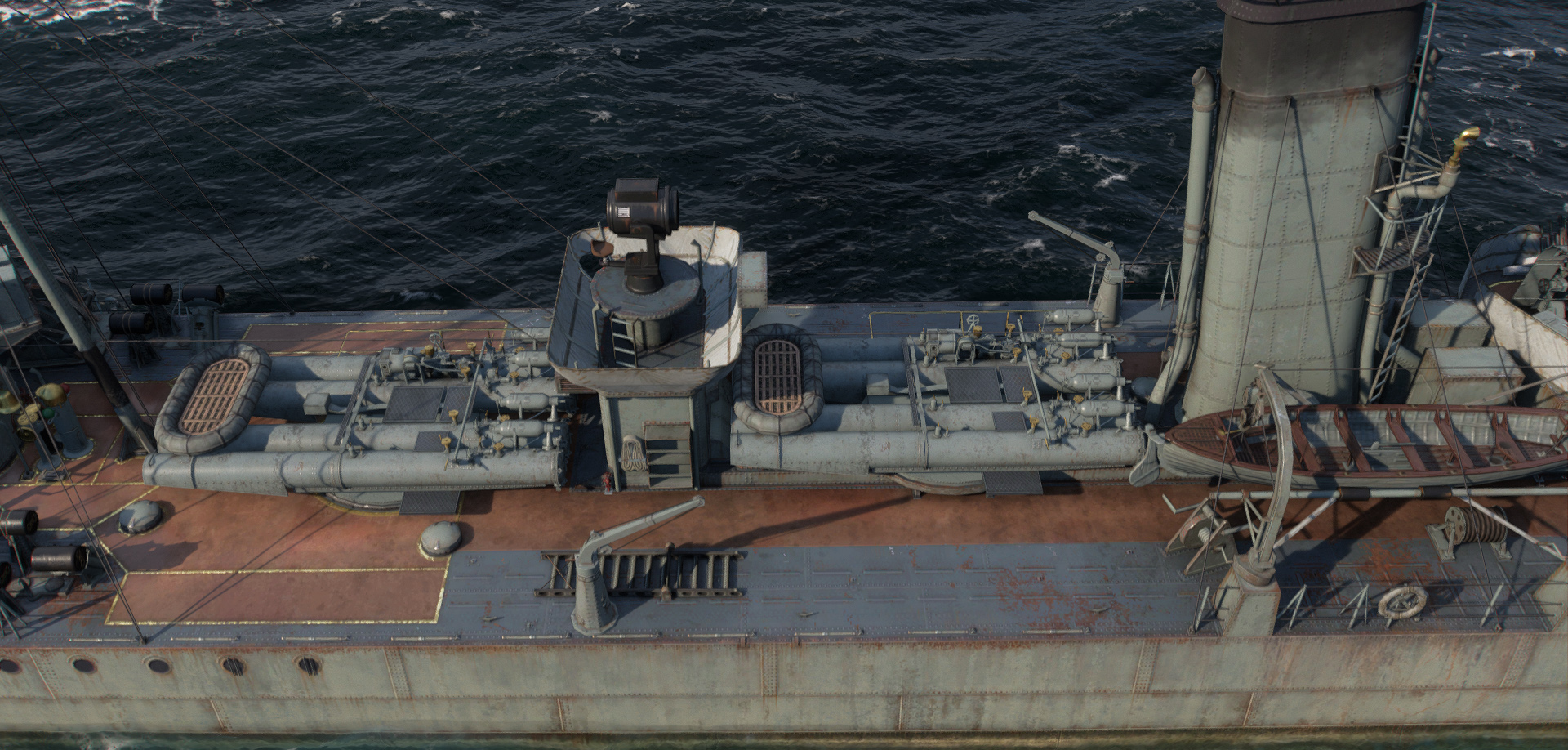
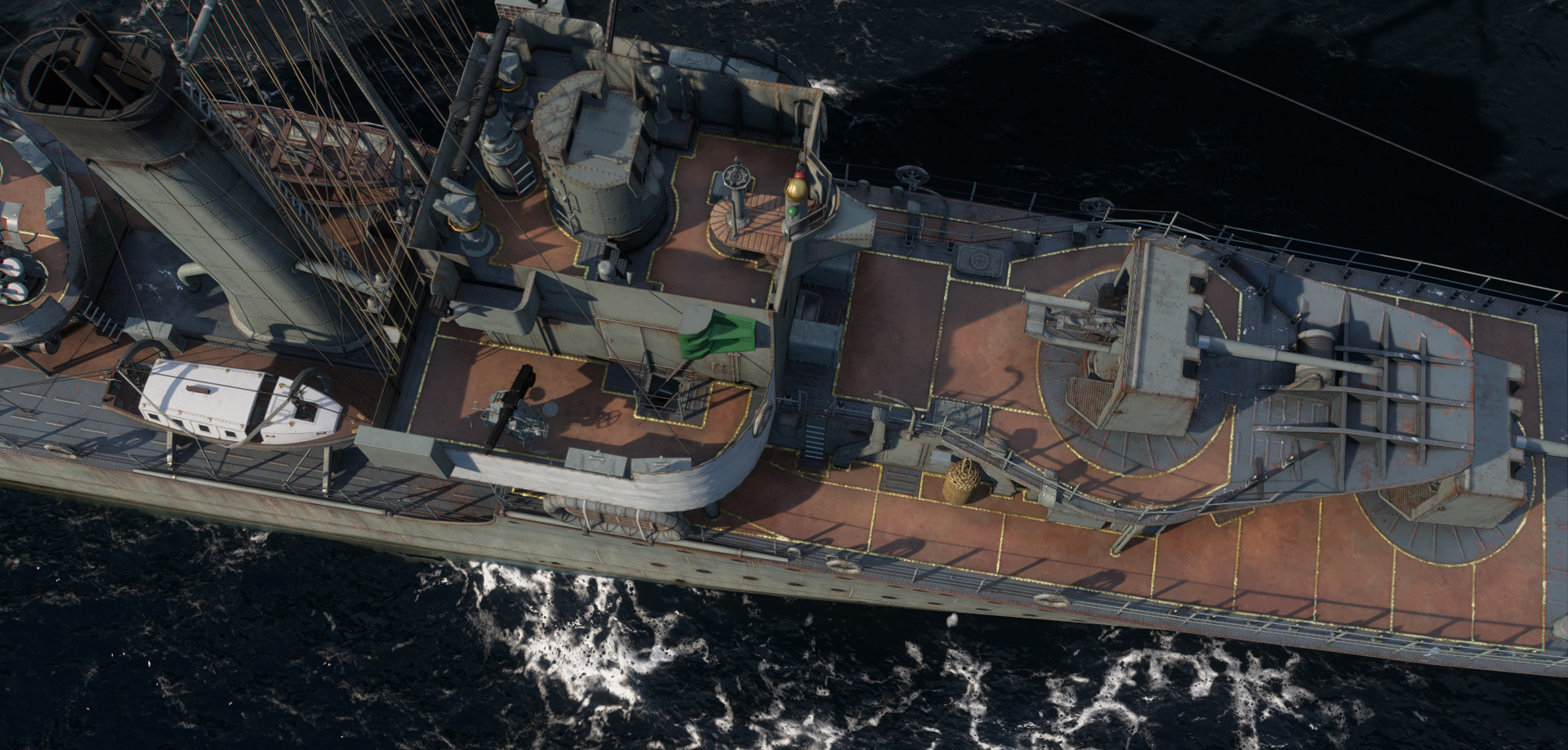
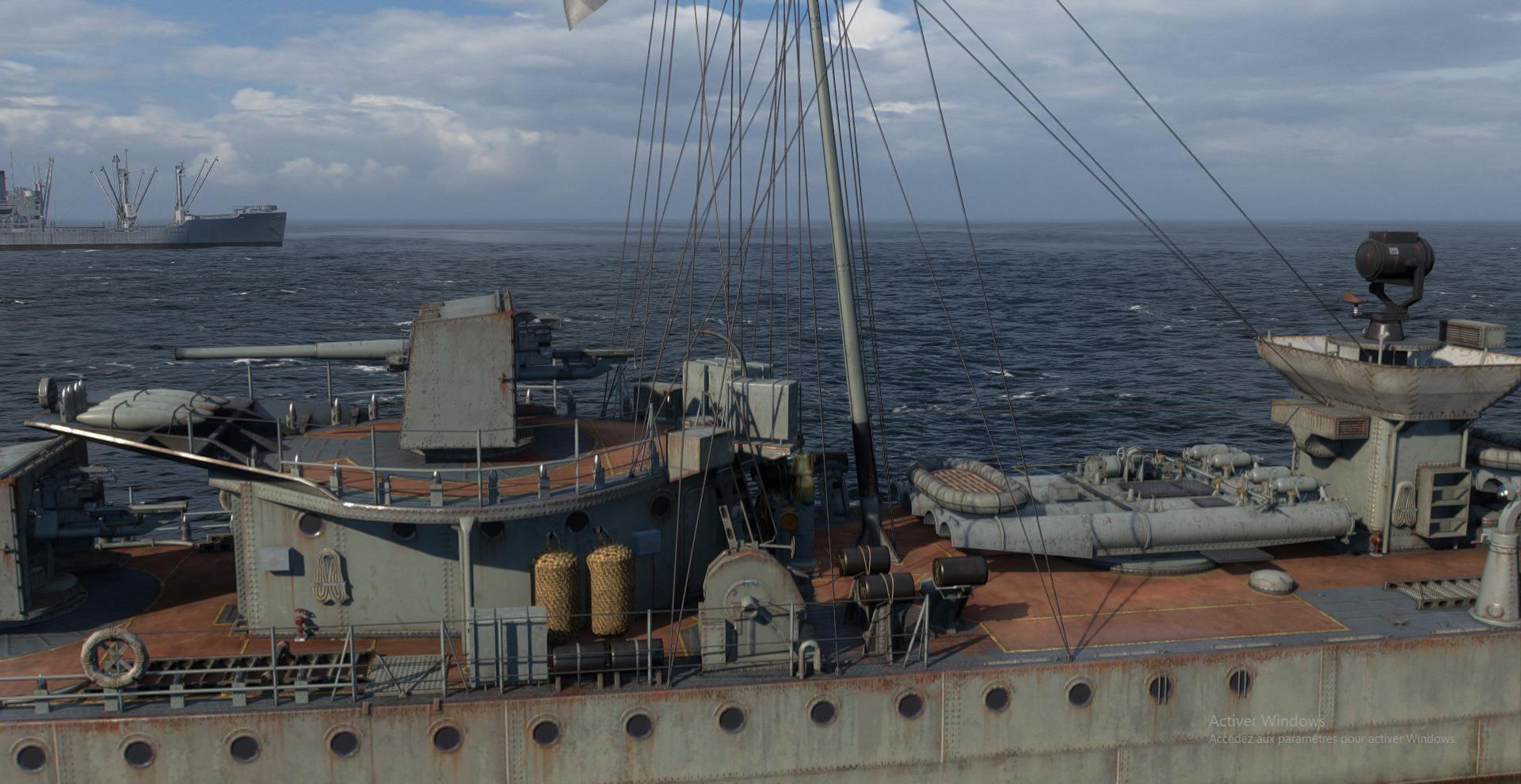
 Latest Facebook Entry -
Latest Facebook Entry -  X(Tweeter) Naval Encyclopedia's deck archive
X(Tweeter) Naval Encyclopedia's deck archive Instagram (@navalencyc)
Instagram (@navalencyc)





 French Navy
French Navy Royal Navy
Royal Navy Russian Navy
Russian Navy Armada Espanola
Armada Espanola Austrian Navy
Austrian Navy K.u.K. Kriegsmarine
K.u.K. Kriegsmarine Dansk Marine
Dansk Marine Nautiko Hellenon
Nautiko Hellenon Koninklije Marine 1870
Koninklije Marine 1870 Marinha do Brasil
Marinha do Brasil Osmanlı Donanması
Osmanlı Donanması Marina Do Peru
Marina Do Peru Marinha do Portugal
Marinha do Portugal Regia Marina 1870
Regia Marina 1870 Nihhon Kaigun 1870
Nihhon Kaigun 1870 Preußische Marine 1870
Preußische Marine 1870 Russkiy Flot 1870
Russkiy Flot 1870 Svenska marinen
Svenska marinen Søværnet
Søværnet Union Navy
Union Navy Confederate Navy
Confederate Navy Armada de Argentina
Armada de Argentina Imperial Chinese Navy
Imperial Chinese Navy Marinha do Portugal
Marinha do Portugal Mexico
Mexico Kaiserliche Marine
Kaiserliche Marine 1898 US Navy
1898 US Navy Sovietskiy Flot
Sovietskiy Flot Royal Canadian Navy
Royal Canadian Navy Royal Australian Navy
Royal Australian Navy RNZN Fleet
RNZN Fleet Chinese Navy 1937
Chinese Navy 1937 Kriegsmarine
Kriegsmarine Chilean Navy
Chilean Navy Danish Navy
Danish Navy Finnish Navy
Finnish Navy Hellenic Navy
Hellenic Navy Polish Navy
Polish Navy Romanian Navy
Romanian Navy Turkish Navy
Turkish Navy Royal Yugoslav Navy
Royal Yugoslav Navy Royal Thai Navy
Royal Thai Navy Minor Navies
Minor Navies Albania
Albania Austria
Austria Belgium
Belgium Columbia
Columbia Costa Rica
Costa Rica Cuba
Cuba Czechoslovakia
Czechoslovakia Dominican Republic
Dominican Republic Haiti
Haiti Hungary
Hungary Honduras
Honduras Estonia
Estonia Iceland
Iceland Eire
Eire Equador
Equador Iran
Iran Iraq
Iraq Latvia
Latvia Liberia
Liberia Lithuania
Lithuania Mandchukuo
Mandchukuo Morocco
Morocco Nicaragua
Nicaragua Persia
Persia San Salvador
San Salvador Sarawak
Sarawak Uruguay
Uruguay Venezuela
Venezuela Zanzibar
Zanzibar Warsaw Pact Navies
Warsaw Pact Navies Bulgaria
Bulgaria Hungary
Hungary

 Bundesmarine
Bundesmarine Dutch Navy
Dutch Navy Hellenic Navy
Hellenic Navy Marina Militare
Marina Militare Yugoslav Navy
Yugoslav Navy Chinese Navy
Chinese Navy Indian Navy
Indian Navy Indonesian Navy
Indonesian Navy JMSDF
JMSDF North Korean Navy
North Korean Navy Pakistani Navy
Pakistani Navy Philippines Navy
Philippines Navy ROKN
ROKN Rep. of Singapore Navy
Rep. of Singapore Navy Taiwanese Navy
Taiwanese Navy IDF Navy
IDF Navy Saudi Navy
Saudi Navy Royal New Zealand Navy
Royal New Zealand Navy Egyptian Navy
Egyptian Navy South African Navy
South African Navy






























 Ukrainian Navy
Ukrainian Navy dbodesign
dbodesign